Leonardo da Vinci
Leonardo da Vinci was a Renaissance artist and engineer, known for paintings like "The Last Supper" and "Mona Lisa,” and for inventions like a flying machine.
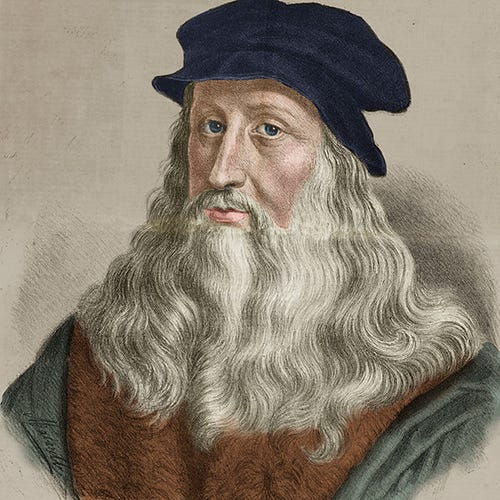
(1452-1519)

Who Was Leonardo da Vinci?
Leonardo da Vinci was a Renaissance painter, sculptor, architect, inventor, military engineer and draftsman — the epitome of a true Renaissance man. Gifted with a curious mind and a brilliant intellect, da Vinci studied the laws of science and nature, which greatly informed his work. His drawings, paintings and other works have influenced countless artists and engineers over the centuries.
Da Vinci was born in a farmhouse outside the village of Anchiano in Tuscany, Italy (about 18 miles west of Florence) on April 15, 1452.
Born out of wedlock to respected Florentine notary Ser Piero and a young peasant woman named Caterina, da Vinci was raised by his father and his stepmother.
At the age of five, he moved to his father’s estate in nearby Vinci (the town from which his surname derives), where he lived with his uncle and grandparents.
Young da Vinci received little formal education beyond basic reading, writing and mathematics instruction, but his artistic talents were evident from an early age.
Around the age of 14, da Vinci began a lengthy apprenticeship with the noted artist Andrea del Verrocchio in Florence. He learned a wide breadth of technical skills including metalworking, leather arts, carpentry, drawing, painting and sculpting.
His earliest known dated work — a pen-and-ink drawing of a landscape in the Arno valley — was sketched in 1473.
Early Works
At the age of 20, da Vinci qualified for membership as a master artist in Florence’s Guild of Saint Luke and established his own workshop. However, he continued to collaborate with del Verrocchio for an additional five years.
It is thought that del Verrocchio completed his “Baptism of Christ” around 1475 with the help of his student, who painted part of the background and the young angel holding the robe of Jesus.
According to Lives of the Most Excellent Painters, Sculptors and Architects , written around 1550 by artist Giorgio Vasari, del Verrocchio was so humbled by the superior talent of his pupil that he never picked up a paintbrush again. (Most scholars, however, dismiss Vasari’s account as apocryphal.)
In 1478, after leaving del Verrocchio’s studio, da Vinci received his first independent commission for an altarpiece to reside in a chapel inside Florence’s Palazzo Vecchio.
Three years later the Augustinian monks of Florence’s San Donato a Scopeto tasked him to paint “Adoration of the Magi.” The young artist, however, would leave the city and abandon both commissions without ever completing them.
Was Leonardo da Vinci Gay?
Many historians believe that da Vinci was a homosexual: Florentine court records from 1476 show that da Vinci and four other young men were charged with sodomy, a crime punishable by exile or death.
After no witnesses showed up to testify against 24-year-old da Vinci, the charges were dropped, but his whereabouts went entirely undocumented for the following two years.
Leonardo da Vinci: Paintings
Although da Vinci is known for his artistic abilities, fewer than two dozen paintings attributed to him exist. One reason is that his interests were so varied that he wasn’t a prolific painter. Da Vinci’s most famous works include the “Vitruvian Man,” “The Last Supper” and the “ Mona Lisa .”
Vitruvian Man
Art and science intersected perfectly in da Vinci’s sketch of “Vitruvian Man,” drawn in 1490, which depicted a nude male figure in two superimposed positions with his arms and legs apart inside both a square and a circle.
The now-famous sketch represents da Vinci's study of proportion and symmetry, as well as his desire to relate man to the natural world.
The Last Supper
Around 1495, Ludovico Sforza, then the Duke of Milan, commissioned da Vinci to paint “The Last Supper” on the back wall of the dining hall inside the monastery of Milan’s Santa Maria delle Grazie.
The masterpiece, which took approximately three years to complete, captures the drama of the moment when Jesus informs the Twelve Apostles gathered for Passover dinner that one of them would soon betray him. The range of facial expressions and the body language of the figures around the table bring the masterful composition to life.
The decision by da Vinci to paint with tempera and oil on dried plaster instead of painting a fresco on fresh plaster led to the quick deterioration and flaking of “The Last Supper.” Although an improper restoration caused further damage to the mural, it has now been stabilized using modern conservation techniques.
In 1503, da Vinci started working on what would become his most well-known painting — and arguably the most famous painting in the world —the “Mona Lisa.” The privately commissioned work is characterized by the enigmatic smile of the woman in the half-portrait, which derives from da Vinci’s sfumato technique.
Adding to the allure of the “Mona Lisa” is the mystery surrounding the identity of the subject. Princess Isabella of Naples, an unnamed courtesan and da Vinci’s own mother have all been put forth as potential sitters for the masterpiece. It has even been speculated that the subject wasn’t a female at all but da Vinci’s longtime apprentice Salai dressed in women’s clothing.
Based on accounts from an early biographer, however, the "Mona Lisa" is a picture of Lisa del Giocondo, the wife of a wealthy Florentine silk merchant. The painting’s original Italian name — “La Gioconda” — supports the theory, but it’s far from certain. Some art historians believe the merchant commissioned the portrait to celebrate the pending birth of the couple’s next child, which means the subject could have been pregnant at the time of the painting.
If the Giocondo family did indeed commission the painting, they never received it. For da Vinci, the "Mona Lisa" was forever a work in progress, as it was his attempt at perfection, and he never parted with the painting. Today, the "Mona Lisa" hangs in the Louvre Museum in Paris, France, secured behind bulletproof glass and regarded as a priceless national treasure seen by millions of visitors each year.
Battle of Anghiari
In 1503, da Vinci also started work on the "Battle of Anghiari," a mural commissioned for the council hall in the Palazzo Vecchio that was to be twice as large as "The Last Supper."
He abandoned the "Battle of Anghiari" project after two years when the mural began to deteriorate before he had a chance to finish it.
In 1482, Florentine ruler Lorenzo de' Medici commissioned da Vinci to create a silver lyre and bring it as a peace gesture to Ludovico Sforza. After doing so, da Vinci lobbied Ludovico for a job and sent the future Duke of Milan a letter that barely mentioned his considerable talents as an artist and instead touted his more marketable skills as a military engineer.
Using his inventive mind, da Vinci sketched war machines such as a war chariot with scythe blades mounted on the sides, an armored tank propelled by two men cranking a shaft and even an enormous crossbow that required a small army of men to operate.
The letter worked, and Ludovico brought da Vinci to Milan for a tenure that would last 17 years. During his time in Milan, da Vinci was commissioned to work on numerous artistic projects as well, including “The Last Supper.”
Da Vinci’s ability to be employed by the Sforza clan as an architecture and military engineering advisor as well as a painter and sculptor spoke to da Vinci’s keen intellect and curiosity about a wide variety of subjects.
Flying Machine
Always a man ahead of his time, da Vinci appeared to prophesy the future with his sketches of devices that resemble a modern-day bicycle and a type of helicopter.
Perhaps his most well-known invention is a flying machine, which is based on the physiology of a bat. These and other explorations into the mechanics of flight are found in da Vinci's Codex on the Flight of Birds, a study of avian aeronautics, which he began in 1505.
Like many leaders of Renaissance humanism, da Vinci did not see a divide between science and art. He viewed the two as intertwined disciplines rather than separate ones. He believed studying science made him a better artist.
In 1502 and 1503, da Vinci also briefly worked in Florence as a military engineer for Cesare Borgia, the illegitimate son of Pope Alexander VI and commander of the papal army. He traveled outside of Florence to survey military construction projects and sketch city plans and topographical maps.
He designed plans, possibly with noted diplomat Niccolò Machiavelli , to divert the Arno River away from rival Pisa in order to deny its wartime enemy access to the sea.
DOWNLOAD BIOGRAPHY'S LEONARDO DA VINCI FACT CARD
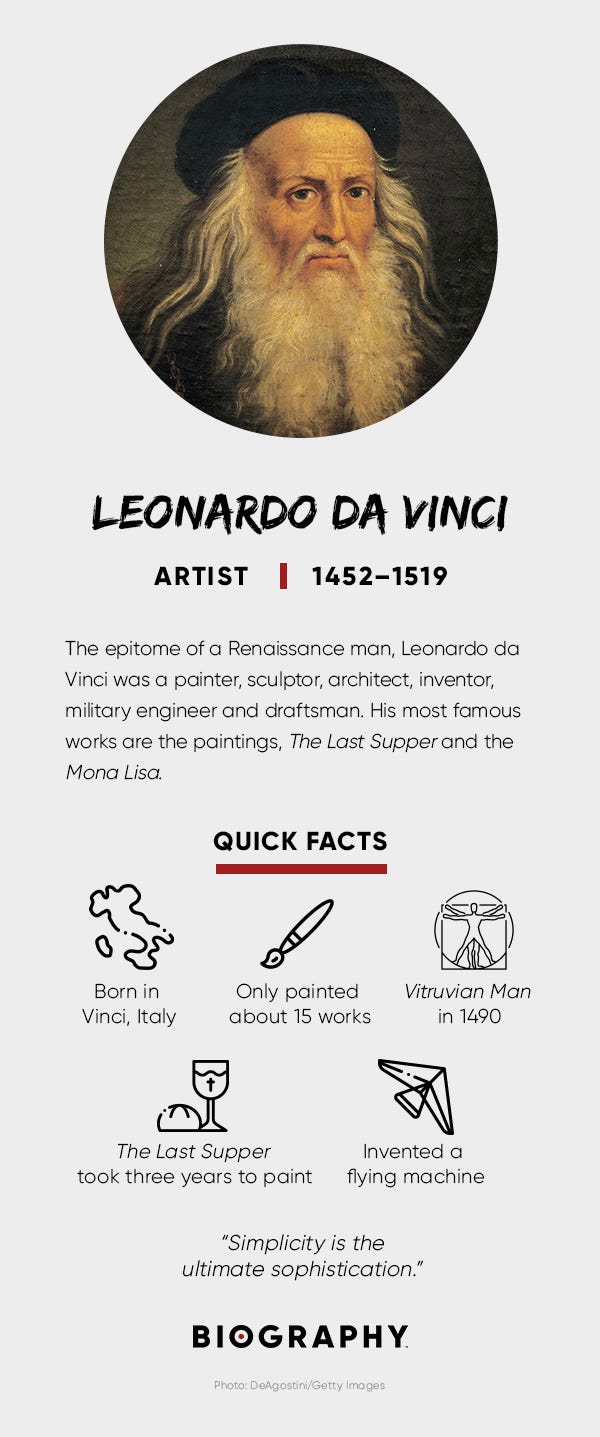
Da Vinci’s Study of Anatomy and Science
Da Vinci thought sight was humankind’s most important sense and eyes the most important organ, and he stressed the importance of saper vedere, or “knowing how to see.” He believed in the accumulation of direct knowledge and facts through observation.
“A good painter has two chief objects to paint — man and the intention of his soul,” da Vinci wrote. “The former is easy, the latter hard, for it must be expressed by gestures and the movement of the limbs.”
To more accurately depict those gestures and movements, da Vinci began to study anatomy seriously and dissect human and animal bodies during the 1480s. His drawings of a fetus in utero, the heart and vascular system, sex organs and other bone and muscular structures are some of the first on human record.
In addition to his anatomical investigations, da Vinci studied botany, geology, zoology, hydraulics, aeronautics and physics. He sketched his observations on loose sheets of papers and pads that he tucked inside his belt.
Da Vinci placed the papers in notebooks and arranged them around four broad themes—painting, architecture, mechanics and human anatomy. He filled dozens of notebooks with finely drawn illustrations and scientific observations.
Ludovico Sforza also tasked da Vinci with sculpting a 16-foot-tall bronze equestrian statue of his father and founder of the family dynasty, Francesco Sforza. With the help of apprentices and students in his workshop, da Vinci worked on the project on and off for more than a dozen years.
Da Vinci sculpted a life-size clay model of the statue, but the project was put on hold when war with France required bronze to be used for casting cannons, not sculptures. After French forces overran Milan in 1499 — and shot the clay model to pieces — da Vinci fled the city along with the duke and the Sforza family.
Ironically, Gian Giacomo Trivulzio, who led the French forces that conquered Ludovico in 1499, followed in his foe’s footsteps and commissioned da Vinci to sculpt a grand equestrian statue, one that could be mounted on his tomb. After years of work and numerous sketches by da Vinci, Trivulzio decided to scale back the size of the statue, which was ultimately never finished.
Final Years
Da Vinci returned to Milan in 1506 to work for the very French rulers who had overtaken the city seven years earlier and forced him to flee.
Among the students who joined his studio was young Milanese aristocrat Francesco Melzi, who would become da Vinci’s closest companion for the rest of his life. He did little painting during his second stint in Milan, however, and most of his time was instead dedicated to scientific studies.
Amid political strife and the temporary expulsion of the French from Milan, da Vinci left the city and moved to Rome in 1513 along with Salai, Melzi and two studio assistants. Giuliano de’ Medici, brother of newly installed Pope Leo X and son of his former patron, gave da Vinci a monthly stipend along with a suite of rooms at his residence inside the Vatican.
His new patron, however, also gave da Vinci little work. Lacking large commissions, he devoted most of his time in Rome to mathematical studies and scientific exploration.
After being present at a 1515 meeting between France’s King Francis I and Pope Leo X in Bologna, the new French monarch offered da Vinci the title “Premier Painter and Engineer and Architect to the King.”
Along with Melzi, da Vinci departed for France, never to return. He lived in the Chateau de Cloux (now Clos Luce) near the king’s summer palace along the Loire River in Amboise. As in Rome, da Vinci did little painting during his time in France. One of his last commissioned works was a mechanical lion that could walk and open its chest to reveal a bouquet of lilies.
How Did Leonardo da Vinci Die?
Da Vinci died of a probable stroke on May 2, 1519, at the age of 67. He continued work on his scientific studies until his death; his assistant, Melzi, became the principal heir and executor of his estate. The “Mona Lisa” was bequeathed to Salai.
For centuries after his death, thousands of pages from his private journals with notes, drawings, observations and scientific theories have surfaced and provided a fuller measure of the true "Renaissance man."
Book and Movie
Although much has been written about da Vinci over the years, Walter Isaacson explored new territory with an acclaimed 2017 biography, Leonardo da Vinci , which offers up details on what drove the artist's creations and inventions.
The buzz surrounding the book carried into 2018, with the announcement that it had been optioned for a big-screen adaptation starring Leonardo DiCaprio .
Salvator Mundi
In 2017, the art world was sent buzzing with the news that the da Vinci painting "Salvator Mundi" had been sold at a Christie's auction to an undisclosed buyer for a whopping $450.3 million. That amount dwarfed the previous record for an art work sold at an auction, the $179.4 million paid for “Women of Algiers" by Pablo Picasso in 2015.
The sales figure was stunning in part because of the damaged condition of the oil-on-panel, which features Jesus Christ with his right hand raised in blessing and his left holding a crystal orb, and because not all experts believe it was rendered by da Vinci.
However, Christie's had launched what one dealer called a "brilliant marketing campaign," which promoted the work as "the holy grail of our business" and "the last da Vinci." Prior to the sale, it was the only known painting by the old master still in a private collection.
The Saudi Embassy stated that Prince Bader bin Abdullah bin Mohammed bin Farhan al-Saud of Saudi Arabia had acted as an agent for the ministry of culture of Abu Dhabi, in the United Arab Emirates. Around that time, the newly-opened Louvre Abu Dhabi announced that the record-breaking artwork would be exhibited in its collection.
Michelangelo
"],["
Vincent van Gogh
"]]" tml-render-layout="inline">
QUICK FACTS
- Name: Leonardo da Vinci
- Birth Year: 1452
- Birth date: April 15, 1452
- Birth City: Vinci
- Birth Country: Italy
- Gender: Male
- Best Known For: Leonardo da Vinci was a Renaissance artist and engineer, known for paintings like "The Last Supper" and "Mona Lisa,” and for inventions like a flying machine.
- Science and Medicine
- Writing and Publishing
- Architecture
- Technology and Engineering
- Astrological Sign: Aries
- Nacionalities
- Interesting Facts
- Leonardo da Vinci was born out of wedlock to a respected Florentine notary and a young peasant woman.
- Da Vinci used tempera and oil on dried plaster to paint "The Last Supper," which led to its quick deterioration and flaking.
- For da Vinci, the "Mona Lisa" was forever a work in progress, as it was his attempt at perfection, and he never parted with the painting.
- Death Year: 1519
- Death date: May 2, 1519
- Death City: Amboise
- Death Country: France
We strive for accuracy and fairness.If you see something that doesn't look right, contact us !
CITATION INFORMATION
- Article Title: Leonardo da Vinci Biography
- Author: Biography.com Editors
- Website Name: The Biography.com website
- Url: https://www.biography.com/artists/leonardo-da-vincii
- Access Date:
- Publisher: A&E; Television Networks
- Last Updated: August 28, 2019
- Original Published Date: April 3, 2014
- Iron rusts from disuse, stagnant water loses its purity and in cold weather becomes frozen; even so does inaction sap the vigor of the mind.
- Nothing is hidden beneath the sun.
- Obstacles cannot bend me. Every obstacle yields to effort.
- We make our life by the death of others.
- Necessity is the mistress and guardian of nature.
- One ought not to desire the impossible.
- He who neglects to punish evil sanctions the doing thereof.
- Darkness is the absence of light. Shadow is the diminution of light.
- The painter who draws by practice and judgment of the eye without the use of reason, is like the mirror that reproduces within itself all the objects which are set opposite to it without knowledge of the same.
- He who does not value life does not deserve it.
- Simplicity is the ultimate sophistication.
- Nothing strengthens authority so much as silence.
Famous Painters

11 Notable Artists from the Harlem Renaissance

Fernando Botero

Gustav Klimt

The Surreal Romance of Salvador and Gala Dalí

Salvador Dalí

Margaret Keane

Andy Warhol
Biography Online

- Leonardo da Vinci Biography
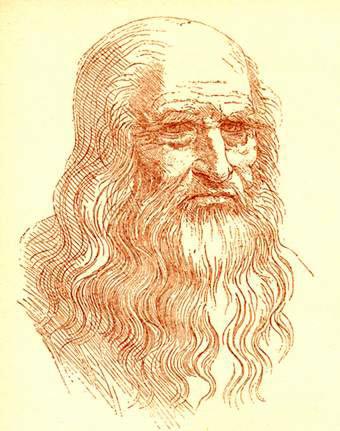
In addition to art, Da Vinci studied all aspects of life from anatomy to mathematics and astronomy; his far-reaching investigations and discoveries sought to show an underlying unity of the universe. Da Vinci is considered to be a key person in the birth of the European Renaissance , which saw an emergence of new ideas, scientific discoveries and the creation of beautiful art.
Short Biography of Leonardo da Vinci
Leonardo was born an illegitimate son of a Florentine noble and peasant woman; he grew up in Vinci, Italy. In his formative years, he developed a love of nature and from an early age began to display his remarkable academic and artistic talents.
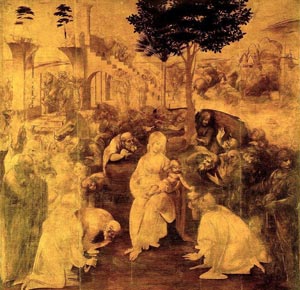
Adoration of the Magi by Da Vinci
In 1466, he moved to Florence where he entered the workshop of Verrocchio. Initially, his formative style reflected his teacher but he soon developed an artistic sense which went far beyond his master’s rigid style. His first work of significance was the “Adoration of the Magi” commissioned by monks of San Donato a Scopeto. Although unfinished, the work was a masterpiece and introduced several new ideas. In particular, he introduced themes of movement and drama. He also pioneered the use of Chiaroscuro ; this is the technique of defining forms through the contrast of light and shadow. This would be later used to great effect in the Mona Lisa.
“Shadow is the means by which bodies display their form. The forms of bodies could not be understood in detail but for shadow.” The Notebooks of Leonardo da Vinci (Richter, 1888)
In 1482, Leonardo went to the court of Ludovico Sforza in Milan, where he stayed for 16 years. Here he continued painting and also branched out into other interest such as engineering and anatomy. During this period he painted the famous artworks “Madonna on the Rocks” and also “The Last Supper.”

Last Supper by Leonardo Da Vinci
The Last Supper has been described as one of the greatest religious paintings. With Christ at the centre of the picture, it embodies great feeling and emotion as Christ is about to announce his imminent betrayal by Judas. The painting is held at the Convent of Santa Maria Delle Grazie, Milan, but unfortunately over time the quality of the original painting has deteriorated, despite frequent restoration attempts.
Leonardo Da Vinci and Mona Lisa

In 1499, his patron L. Sforza was defeated by the French invasion, causing Leonardo to return to Florence. During this period, he painted the fresco of the Battle of Anghiari. This artwork was to exert tremendous influence over future artists. However, it was never completed and was later destroyed. It was also during this period that Leonardo completed The Mona Lisa. The Mona Lisa is one of the world’s most famous and intriguing pictures. The Mona Lisa is a portrait of a wife of a Florentine noble. For several days she came to Leonardo and sat for her portrait to be painted; however, she refused to smile. Leonardo even tried hiring musicians but to no avail. One day, just for a fleeting second, she gave a faint smile, and Leonardo was able to capture it. Her smile encapsulates a mysteriousness which is both fascinating and intriguing. Sri Chinmoy said of the Mona Lisa.
“That smile has immortalized her, immortalized the artist and immortalized the art. Artist and art have been immortalized by just a faint smile, a smile that has an enigmatic touch. Even now a soul-touch is there, and that soul-touch has conquered the heart of the world.” (1)
In the Mona Lisa, Leonardo masters the techniques of sfumato and chiaroscuro . Sfumato enables a gradual transition between colours – allowing delicate and expressive images. In the Mona Lisa, the use of chiaroscuro is evident in the contrast between her face and the dark background.

Glider design by Da Vinci
In this period Leonardo also extended his studies into engineering, science and other subjects. There seemed to be no end to his interests. He made copious notes in his complex mirror handwriting, much of which wasn’t deciphered in his lifetime. He also drew complex models of machines; in particular, he was fascinated by flight. He used to buy birds just so that he could release and enjoy watching them fly away. Da Vinci also attempted to build a flying object himself. Machines that he drew on paper, such as helicopters, would become a reality many centuries later. If his medicinal studies had been published, it would have revolutionised the science, as he was one of the first to understand the circulation of blood within the body. He also realised the earth revolved around the sun, anticipating the future work of Copernicus and Galileo . Da Vinci was driven to contemplate all aspects of life and the world, it left him with a great love and fascination with the universe.
“Here forms, here colours, here the character of every part of the universe are concentrated to a point; and that point is so marvellous a thing … Oh! marvellous, O stupendous Necessity — by thy laws thou dost compel every effect to be the direct result of its cause, by the shortest path. These are miracles…” The Notebooks of Leonardo da Vinci
Through different fields, Da Vinci sought to see an underlying unity in the universe and took an optimistic view of human potential.
“Things that are separate shall be united and acquire such virtue that they will restore to man his lost memory.”
The Vitruvian Man
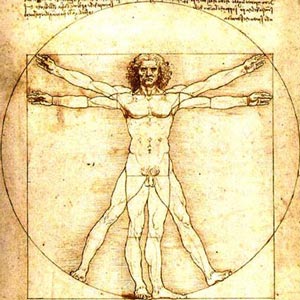
Leonardo Da Vinci’s Vitruvian Man
This is a drawing of the proportions of man. Da Vinci used earlier work and notes by the Roman architect Vitruvius. The picture combines art, man and science – illustrating the beauty of geometrical proportions and the human form. It is symbolic of Da Vinci’s work, and the Renaissance he inspired, to combine these art forms into one diagram. In the simplicity of a line drawing, there are many different factors brought into play; it has become an iconic image.
Da Vinci fame grew during his lifetime, though he was not a wealthy man and he had to rely on the patronage of his patrons. This included powerful men, such as Cesare Borgia, who in the early 1500s demanded Da Vinci design instruments of war. Da Vinci designed a crossbow, prototype tank and ‘machine gun.’
Personal life of Da Vinci
Leonardo remained single throughout his life. He did not marry or have children. He kept his personal life private and shared few details. He was close with his pupils Salai and Melzi, but appeared to be mostly absorbed in his far-reaching investigations, work and paintings. In his day, contemporary reports indicated Da Vinci was a unique person, with a physical beauty, dignified presence and strong moral character. Da Vinci expresses his love of truth:
“To lie is so vile, that even if it were in speaking well of godly things it would take off something from God’s grace; and Truth is so excellent, that if it praises but small things they become noble.” The Notebooks of Leonardo da Vinci
His first biographer, Giorgio Vasari, writes on the person of Da Vinci in 1550.
“..Besides a beauty of body never sufficiently extolled, there was an infinite grace in all his actions; and so great was his genius, and such its growth, that to whatever difficulties he turned his mind, he solved them with ease.” ( Source text )
A notable characteristic of Da Vinci was his wide-ranging respect and reverence for truth, life and living creatures. He adopted a vegetarian diet and would buy caged birds just so he could release them. He is quoted as saying:
“ The time will come when men such as I will look upon the murder of animals as they now look upon the murder of men.”
Between 1506-1510, Leonardo spent time in Milan working on behalf of the very generous French King Lois XII. In 1513 he travelled to the Vatican, Rome where he enjoyed the patronage of the new Medici Pope, Leo X. Here, Da Vinci worked in proximity to contemporaries such as the great Masters Michelangelo and Raphael . However, an intense rivalry soon developed between the younger Michelangelo and Da Vinci.
The religion of Da Vinci
Despite being the patron of the Pope, Da Vinci was not an orthodox Catholic. Vasari writes of Da Vinci that he was:
“cast of mind was so heretical that he did not adhere to any religion, thinking perhaps that it was better to be a philosopher than a Christian.”

Madonna of the Rocks (cropped) by Da Vinci
Vasari removed this quote in the second edition but, from his life’s work, we can see Da Vinci valued reason and was willing to question dogma passed down through the ages. Da Vinci wrote criticisms of the sale of indulgences by the Catholic Church. The religious paintings of Da Vinci also indicate a religious faith expressed in a non-conformist way. His Madonna on the Rocks incorporates a Virgin Mary, not dressed regally or surrounded with a halo, but simply dressed in the surroundings of nature. Da Vinci did believe in God, but his religious sensibilities were expressed through seeing God in art, science and nature.
“We, by our arts may be called the grandsons of God.” The Notebooks of Leonardo da Vinci
Da Vinci was a great perfectionist – one reason why he completed so few paintings was that he never felt he had satisfactorily finished anything. He said towards the end of his life:
“I have offended God and mankind because my work didn’t reach the quality it should have.”
In 1515, Da Vinci left to settle at the castle of Cloux, near Amboise by the kind invitation of Francis I of France. Here Da Vinci, spent his remaining years, free to pursue his own studies. He died in 1519 leaving behind one of the greatest body of artistic and scientific works.
Citation: Pettinger, Tejvan . “ Biography of Leonardo da Vinci ”, Oxford, UK – www.biographyonline.net . Published: 12th Jan 2014. Last updated 15th February 2018.
Related pages
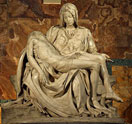
Leonardo Da Vinci

Leonardo Da Vinci by Martin Kemp at Amazon
Leonardo Da Vinci notebooks

Leonardo Da Vinci Notebooks at Amazon
External links
- Leonardo da Vinci
- Leonardo da Vinci Facts
this who i pick for my project Leonardo de Vinci
- February 20, 2019 3:36 PM
Leonardo da Vinci is my favourite artist. And great for online searching for History 👍🏻👍🏻👍🏻
- February 14, 2019 9:31 AM
- By Jocelyn The Unicorn Cat
great topic for world history essays
- January 24, 2019 4:13 PM
Amazing article thanks for sharing
- October 21, 2018 3:14 PM
- By Rambharat
Leonardo de Vinci is a good topic to do a protect of
- October 04, 2018 4:35 PM
- History Classics
- Your Profile
- Find History on Facebook (Opens in a new window)
- Find History on Twitter (Opens in a new window)
- Find History on YouTube (Opens in a new window)
- Find History on Instagram (Opens in a new window)
- Find History on TikTok (Opens in a new window)
- This Day In History
- History Podcasts
- History Vault
Leonardo da Vinci
By: History.com Editors
Updated: July 13, 2022 | Original: December 2, 2009

Leonardo da Vinci was a painter, engineer, architect, inventor, and student of all things scientific. His natural genius crossed so many disciplines that he epitomized the term “ Renaissance man.” Today he remains best known for two of his paintings, " Mona Lisa " and "The Last Supper." Largely self-educated, he filled dozens of secret notebooks with inventions, observations and theories about pursuits from aeronautics to human anatomy. His combination of intellect and imagination allowed him to create, at least on paper, such inventions as the bicycle, the helicopter and an airplane based on the physiology and flying ability of a bat.
When Was Leonardo da Vinci Born?
Da Vinci was born in Anchiano, Tuscany (now Italy), in 1452, close to the town of Vinci that provided the surname we associate with him today. In his own time he was known just as Leonardo or as “Il Florentine,” since he lived near Florence—and was famed as an artist, inventor and thinker.
Did you know? Leonardo da Vinci’s father, an attorney and notary, and his peasant mother were never married to one another, and Leonardo was the only child they had together. With other partners, they had a total of 17 other children, da Vinci’s half-siblings.
Da Vinci’s parents weren’t married, and his mother, Caterina, a peasant, wed another man while da Vinci was very young and began a new family. Beginning around age 5, he lived on the estate in Vinci that belonged to the family of his father, Ser Peiro, an attorney and notary. Da Vinci’s uncle, who had a particular appreciation for nature that da Vinci grew to share, also helped raise him.
Early Career
Da Vinci received no formal education beyond basic reading, writing and math, but his father appreciated his artistic talent and apprenticed him at around age 15 to the noted sculptor and painter Andrea del Verrocchio of Florence. For about a decade, da Vinci refined his painting and sculpting techniques and trained in mechanical arts.
When he was 20, in 1472, the painters’ guild of Florence offered da Vinci membership, but he remained with Verrocchio until he became an independent master in 1478. Around 1482, he began to paint his first commissioned work, The Adoration of the Magi, for Florence’s San Donato, a Scopeto monastery.
However, da Vinci never completed that piece, because shortly thereafter he relocated to Milan to work for the ruling Sforza clan, serving as an engineer, painter, architect, designer of court festivals and, most notably, a sculptor.
The family asked da Vinci to create a magnificent 16-foot-tall equestrian statue, in bronze, to honor dynasty founder Francesco Sforza. Da Vinci worked on the project on and off for 12 years, and in 1493 a clay model was ready to display. Imminent war, however, meant repurposing the bronze earmarked for the sculpture into cannons, and the clay model was destroyed in the conflict after the ruling Sforza duke fell from power in 1499.
'The Last Supper'
Although relatively few of da Vinci’s paintings and sculptures survive—in part because his total output was quite small—two of his extant works are among the world’s most well-known and admired paintings.
The first is da Vinci’s “The Last Supper,” painted during his time in Milan, from about 1495 to 1498. A tempera and oil mural on plaster, “The Last Supper” was created for the refectory of the city’s Monastery of Santa Maria delle Grazie. Also known as “The Cenacle,” this work measures about 15 by 29 feet and is the artist’s only surviving fresco. It depicts the Passover dinner during which Jesus Christ addresses the Apostles and says, “One of you shall betray me.”
One of the painting’s stellar features is each Apostle’s distinct emotive expression and body language. Its composition, in which Jesus is centered among yet isolated from the Apostles, has influenced generations of painters.
'Mona Lisa'
When Milan was invaded by the French in 1499 and the Sforza family fled, da Vinci escaped as well, possibly first to Venice and then to Florence. There, he painted a series of portraits that included “La Gioconda,” a 21-by-31-inch work that’s best known today as “Mona Lisa.” Painted between approximately 1503 and 1506, the woman depicted—especially because of her mysterious slight smile—has been the subject of speculation for centuries.
In the past she was often thought to be Mona Lisa Gherardini, a courtesan, but current scholarship indicates that she was Lisa del Giocondo, wife of Florentine merchant Francisco del Giocondo. Today, the portrait—the only da Vinci portrait from this period that survives—is housed at the Louvre Museum in Paris, France, where it attracts millions of visitors each year.
Around 1506, da Vinci returned to Milan, along with a group of his students and disciples, including young aristocrat Francesco Melzi, who would be Leonardo’s closest companion until the artist’s death. Ironically, the victor over the Duke Ludovico Sforza, Gian Giacomo Trivulzio, commissioned da Vinci to sculpt his grand equestrian-statue tomb. It, too, was never completed (this time because Trivulzio scaled back his plan). Da Vinci spent seven years in Milan, followed by three more in Rome after Milan once again became inhospitable because of political strife.
Inventions and Philosophy
Da Vinci’s interests ranged far beyond fine art. He studied nature, mechanics, anatomy, physics, architecture, weaponry and more, often creating accurate, workable designs for machines like the bicycle, helicopter, submarine and military tank that would not come to fruition for centuries. He was, wrote Sigmund Freud, “like a man who awoke too early in the darkness, while the others were all still asleep.”
Several themes could be said to unite da Vinci’s eclectic interests. Most notably, he believed that sight was mankind’s most important sense and that “saper vedere” (“knowing how to see”) was crucial to living all aspects of life fully. He saw science and art as complementary rather than distinct disciplines, and thought that ideas formulated in one realm could—and should—inform the other.
Probably because of his abundance of diverse interests, da Vinci failed to complete a significant number of his paintings and projects. He spent a great deal of time immersing himself in nature, testing scientific laws, dissecting bodies (human and animal) and thinking and writing about his observations.
Da Vinci’s Notebooks
At some point in the early 1490s, da Vinci began filling notebooks related to four broad themes—painting, architecture, mechanics and human anatomy—creating thousands of pages of neatly drawn illustrations and densely penned commentary, some of which (thanks to left-handed “mirror script”) was indecipherable to others.
The notebooks—often referred to as da Vinci’s manuscripts and “codices”—are housed today in museum collections after having been scattered after his death. The Codex Atlanticus, for instance, includes a plan for a 65-foot mechanical bat, essentially a flying machine based on the physiology of the bat and on the principles of aeronautics and physics.
Other notebooks contained da Vinci’s anatomical studies of the human skeleton, muscles, brain, and digestive and reproductive systems, which brought new understanding of the human body to a wider audience. However, because they weren’t published in the 1500s, da Vinci’s notebooks had little influence on scientific advancement in the Renaissance period.
How Did Leonardo da Vinci Die?
Da Vinci left Italy for good in 1516, when French ruler Francis I generously offered him the title of “Premier Painter and Engineer and Architect to the King,” which afforded him the opportunity to paint and draw at his leisure while living in a country manor house, the Château of Cloux, near Amboise in France.
Although accompanied by Melzi, to whom he would leave his estate, the bitter tone in drafts of some of his correspondence from this period indicate that da Vinci’s final years may not have been very happy ones. (Melzi would go on to marry and have a son, whose heirs, upon his death, sold da Vinci’s estate.)
Da Vinci died at Cloux (now Clos-Lucé) in 1519 at age 67. He was buried nearby in the palace church of Saint-Florentin. The French Revolution nearly obliterated the church, and its remains were completely demolished in the early 1800s, making it impossible to identify da Vinci’s exact gravesite.

HISTORY Vault: World History
Stream scores of videos about world history, from the Crusades to the Third Reich.

Sign up for Inside History
Get HISTORY’s most fascinating stories delivered to your inbox three times a week.
By submitting your information, you agree to receive emails from HISTORY and A+E Networks. You can opt out at any time. You must be 16 years or older and a resident of the United States.
More details : Privacy Notice | Terms of Use | Contact Us
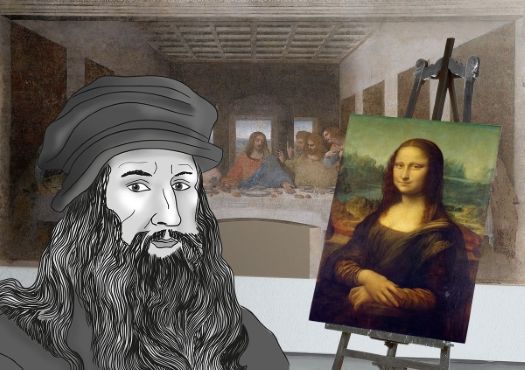
Leonardo da Vinci
Italian Painter, Designer, Sculptor, Inventor, Scientist, Architect, and Engineer

Summary of Leonardo da Vinci
Only a select number of figures in the pantheon of art history can match the level of fame accorded Leonardo da Vinci. The very personification of the "Renaissance man", Leonardo searched for new knowledge within the burgeoning fields of the humanities and the sciences. One of the so-called "holy trinity" (with Michelangelo and Raphael ) of the Italian High Renaissance , Leonardo remains best known today as the painter of some of the world's greatest masterpieces, and for a series of notebooks and drawings that confirm his reputation as the most accomplished polymath of his time.
Accomplishments
- While his yearning for new knowledge that saw him excel in many fields within the humanities and sciences, Leonardo has achieved most acclaim as a painter. He has gained world-wide fame for his enigmatic portrait, the Mona Lisa , the religious fresco, The Last Supper , and his Vitruvian Man , a mathematically precise anatomical drawing. These priceless works are amongst the most known images of all time.
- Leonardo surpassed the naturalistic techniques of Early Renaissance masters through his meticulous attention to detail and through the introduction of new methods. The most influential of these was his signature sfumato effect in which he blended shades of color to blur - or to "smoke" - the outlines of figures, facial features, and objects. Sfumato achieved such realistic effects it contributed significantly to the birth of the era referred to now as the High Renaissance .
- Leonardo's intellectual curiosity and imagination produced many ideas and inventions that were described in his vast collection of notebooks. These contain scientific diagrams (predicting future inventions such as the parachute, the helicopter, and the military tank), anatomical and botanical sketches and drawings, and his philosophy on painting. As the art historian E. H. Gombrich put it, "the more one reads these pages, the less one can understand how one human being could have excelled in all these different fields of research and made important contributions to all of them".
- Leonardo produced several ambitious architectural designs. In Milan, he designed an ingenious 32-mile waterway linking Milan and Lake Como. He is also credited with the design of the spectacular double-helix central staircase (two spirals winding around a glass column, allowing guests to acknowledge each other without physically passing). Through his ability to combine his creative vision with more practical problem-solving skills, Leonardo helped establish architectural principles that have passed down through the centuries.
The Life of Leonardo da Vinci
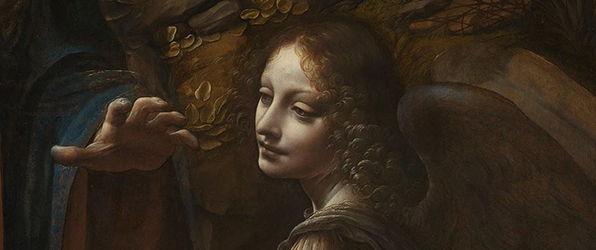
Leonardo stated that "Painting is poetry that is seen rather than felt", and as if to push home his point, he invented sfumato , an application of subtle colored glazes that were able to convey atmosphere and subtle shifts in moods and feelings in the human body and face.
Important Art by Leonardo da Vinci
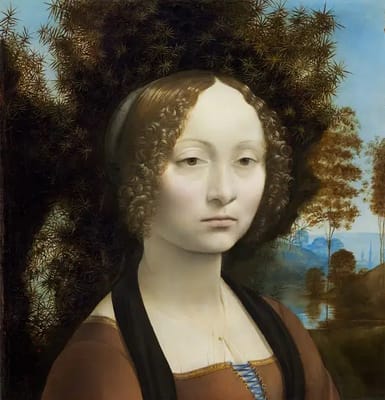
Ginevra de' Benci
Painted while still in his early 20s, Ginevra de' Benci is one of Leonardo's earliest known works. It gives us the first example of his signature portraiture technique whereby he abandoned the conventional "half face" profile pose in favor of a three-quarter pose. Through the three-quarter rotation of his sitter, Leonardo gives us a fuller facial portrait that places the personality of the subject above their status. It was a humanistic technique that would define his future portraits, including such works as the Mona Lisa . Indeed, Leonardo is thought to be the first Italian to represent his sitter in such a way and it would become a convention of High Renaissance portraiture. There is also a strong suggestion (traces of fingerprints on the painting's surface) that Leonardo used his fingers to delicately shade Ginerva's flesh tones. As the National Gallery of Art in Washington (NGAW) states, "The planes of her face subtly modeled, she may have 'come to life' before viewers in a fashion more vivid than any other painting they had seen before", and adds that, "One of Leonardo's contemporaries wrote that he 'painted Ginevra d'Amerigo Benci with such perfection that it seemed to be not a portrait but Ginevra herself'". Ginevra de' Benci was 16 years old and from an affluent family. She was well-educated and had earned a reputation as a fine poet and conversationalist. Her milk-white complexion is flawless, and her blank expression is difficult to read. But as NGAW explains, "Young women of the time were expected to comport themselves with dignity and modesty. Virtue was prized and guarded, and a girl's beauty was thought to be a sign of goodness. Portraitists were expected to enhance - as needed - a woman's attractiveness according to the period's standards of beauty". It is likely that Leonardo was commissioned to paint Ginerva's portrait on the occasion of her betrothal (thought to be to a man named Luigi Niccolini). But as the NGAW states, the painting also "reflects a cultural phenomenon of the Italian Renaissance period - platonic love affairs between well-mannered gentlemen and ladies. Such affairs, often conducted from afar, focused on effusive literary expressions that displayed the courtier's and lady's sophistication". Indeed, Ginevra is known to have had many admirers, including Bernardo Bembo, the Venetian ambassador to Florence, and Lorenzo de'Medici, who both composed poems in her honor. The painting is also of significance for its reverse side which carries an emblem in the form of a wreath of laurel and palm encircled with a sprig of juniper, and a scroll featuring the phrase "Virtutem Forma Decorat" ("beauty adorns virtue"). The NGAW states that "The central juniper, ginepro in Italian, a cognate of Ginevra's name and thus her symbol, also represents chastity. The palm stands for moral virtue, while the laurel indicated artistic or literary inclinations".
Oil on canvas - National Gallery of Art in Washington, D.C.
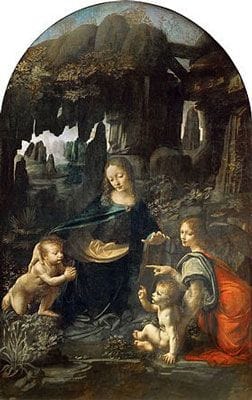
Virgin of the Rocks
This painting presents the Madonna, with infant versions of Christ and John the Baptist, and the archangel Gabriel. Like other Renaissance artists, Leonardo was interested in presenting proverbial religious narratives in a more naturalistic way. Here Leonardo's animate quartet sits amidst a mystical landscape that demonstrates his mathematical approach to picture perspective. Complementing the intimate group in the foreground, the scenery of desolate rocks and still water lends the narrative a dreamlike quality, infusing the scene at once with a sense of the heavenly and the human (a blurring, in other words, of the spiritual with the material). The composition utilizes a pyramidal arrangement common amongst High Renaissance artists, while Leonardo's perfection of anatomical movement and fluidity elevates the figures with a sense of naturalistic motion. Their gestures and glances, too, create a dynamic human interaction that was highly innovative. Leonardo's sfumato style, meanwhile, is present in the way colors and outlines blend into a soft smokiness. This technique brings a heightened intensity and more realistic depth-of-field. The painting is also an early example of the use of oil pigment, which was relatively new to Italy, and made the artist better able to capture such intricate details.
Oil on wood transferred to canvas - Musée du Louvre, Paris
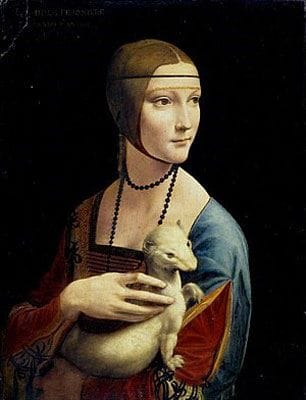
Lady with an Ermine
The Duke of Milan, Ludovico Sforza, commissioned this portrait. In it, Leonardo depicts Sforza's sixteen-year-old mistress Cecilia Gallerani (Sforza being in his late thirties). She peers to the right, as if her attention has been caught by something just outside the picture frame. She bears a look of poise and knowing that is exceptional for a young lady of such tender years. The slightly coy smile seems to suggest her confidence in her position at the Court, and the knowledge of the power of her innate beauty. She holds an ermine, bearer of the fur that was used in Sforza's coat of arms. The ermine was a symbol of purity, and its inclusion was likely representative of Cecilia's fidelity to the Duke. Leonardo's genius in this work is evident in the way he captured the complexity of his sitter's psychology. Indeed, her three-quarter pose and gesture were unconventional for portraiture of the time. Leonardo's scientific study of the human body, and its movements and expressions, meanwhile, allowed him to represent the subtle human undertones that intrigue the viewer and invite them into the intimate mental world of the subject. As art critic Sam Leith put it, "Give the painting a really good, close look and you'll see she really does have the very breath of life in her...just distracted by a noise, caught in a living moment...". In 2014, Pascal Cotte, a French scientist, completed a three-year investigation of the painting in which Cotte discovered that it was completed in three distinct stages. Cotte discovered that Leonardo's first version was a simple portrait (with no animal). The second included a small grey ermine. In the third, the animal is transformed into a large white ermine. Commenting on Cotte's research, historian Lorenza Munoz-Aloñso writes, "The duke, who was da Vinci's patron and champion for eighteen years, was nicknamed 'the white ermine'. The progression in the painting might indicate a growing desire from the couple to affirm their relationship in a more public manner. The transformation of the ermine - from small and dark to muscular and white - could also indicate the duke's wish for a more flattering 'portrait' [of his mistress]". It is also widely believed that the ermine was included to conceal the secret pregnancy of Cecilia who later gave birth to Sforza's son - Cesare.
Oil on wood panel - Czartoryski Museum, Krakow, Poland
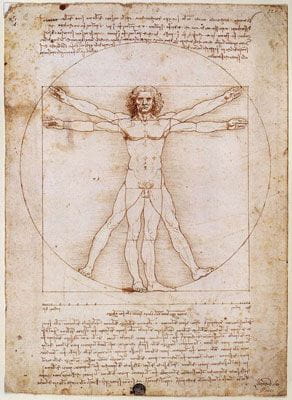
The Vitruvian Man
In the accompanying text to the drawing, Leonardo describes his intention to study the proportions of man as described by the first-century BC Roman architect Vitruvius (after whom the drawing was named) in his treatise De Architectura ( On Architecture , published as Ten Books on Architecture ). Vitruvius used his own studies of well-proportioned man to influence his design of temples, believing that symmetry was crucial to classical architecture. Leonardo used Vitruvius as a starting point for inspiration in his own anatomical studies and further perfected his measurements, correcting over half of Vitruvius's original calculations. The idea of relative proportion has influenced Renaissance architecture (and beyond) as a concept for creating harmony between the earthly and divine in churches, as well as the temporal in palaces and palatial residences. Ultimately, The Vitruvian Man is a mathematical study of the human body highlighting the nature of balance which proportion and symmetry lend us, an understanding that would inform all of Leonardo's output in art and architecture. It also underlines the goals of Renaissance Humanism which placed man in relation to nature, and as a link between the earthly (square) and the divine (circle). It also demonstrates, of course, the artist's thorough understanding of science and mathematics, and his excellence in draftsmanship. The image is truly iconic and has been referenced through several fine art sources. These include William Blake's, Glad Day (aka The Dance of Albion) (c.1794), Enzo Plazzotta's Homage to Leonardo (aka. Vitruvian Man ) (1984) - an outdoor statue in central London, and Andrew Leicester's giant robot-like Tin Man (2001) sculpture placed in the engineering faculty courtyard at the University of Minnesota. It has also provided a point of reference within popular graphic culture with the online comic book resource (Comiclist) displaying some twenty three comic-book covers - including issues of Spiderman, Wonder Woman and Ironman - that self-consciously align these superheroes with Leonardo's drawing. The drawing has even featured in an episode of The Simpsons (season 10) in which Homer Simpson is chased by the Vitruvian Man in a dream where he is attacked by famous artworks that have come to life.
Pen and ink on paper - Accademia, Venice, Italy
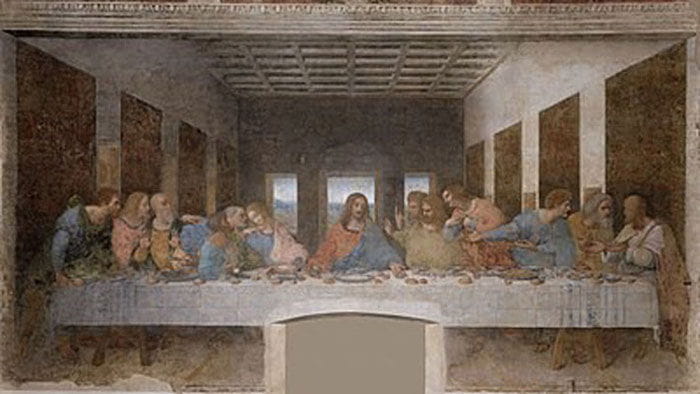
The Last Supper
The Duke of Milan, Ludovico Sforza, commissioned The Last Supper for the dining hall of the Convent of Santa Maria della Grazie. It tells the famous biblical story of the last meal Jesus shared with his disciples before his crucifixion, and specifically, the moment after he has told them that one of their own would betray him. Each of the apostles is individually rendered with different expressions of consternation and disbelief as Judas stands in the shadows clutching the purse containing silver he received for his betrayal (Leonardo was given permission to bring a criminal to his studio from prison to model as Judas). Jesus occupies the center frame, reaching for bread and a glass of wine referring to the Eucharist. Behind him, seen through the windows, lays an idealized landscape, perhaps alluding to heavenly paradise, and the three windows possibly denote the holy trinity. The intricate detail, coupled with the use of one point perspective, placing Jesus at the crux of the pictorial space, and from which all other elements emanate, was to herald in a new direction in High Renaissance art. Furthermore, the use of the vanishing point technique complimented the painting's position and setting, allowing for the artwork to mesh into the space as if it were a natural extension of the nuns' dining area. The art historian E. H. Gombrich said of the finished painting: "There was nothing in this work that resembled older representations of the same theme. In these traditional versions, the apostles were seen sitting quietly at the table in a row - only Judas being segregated from the rest - while Christ was calmly dispensing the Sacrament. There was drama in it, and excitement. Leonardo, like Giotto before him, had gone back to the text of the Scriptures, and had striven to visualize what it must have been like when Christ said, 'Verily I say unto you, that one of you will betray me'". Because the water-based paints typically used for frescos of this type were not conducive to Leonardo's sfumato technique, he opted instead for oil-based paints. However, the oil-on-plaster combination would prove disastrous as, even before the artist's death, the paint had begun to flake from the wall (a situation not helped by the steam and smoke emanating from the monastery's kitchens). Today, little of Leonardo's original paintwork remains with the last restoration, finished in 1999, lasting some twenty-one years. The art historian Khyati Rajvanshi describes how the fresco now sits in a strict temperature-controlled environment. Rajvanshi adds that "The management board allows just 1,300 people to visit the Last Supper each day" giving each person a maximum of fifteen minutes to enjoy the masterpiece (and not leave too much dust to cause it further harm).
Fresco - Convent of Sta. Maria delle Grazie, Milan, Italy
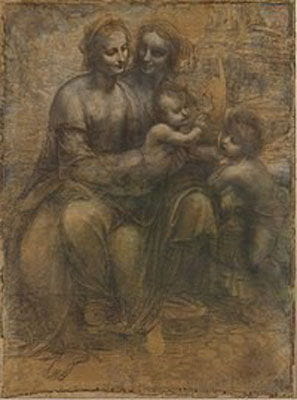
The Virgin and Child with St. Anne and St. John the Baptist
This preliminary drawing shows the Virgin seated next to her mother, St. Anne, while holding the baby Jesus, and with the baby St. John the Baptist looking on. Mary's eyes peer down at her child who points to the heavens as he delivers a benediction. The piece is very large in size, consisting of eight papers glued together. Also known as the Burlington House Cartoon , it is presumed to be a sketch in planning for a painting, although the painting either no longer exists, or was never created. Leonardo often used a "cartoon" such as this as a stencil which he placed on the intended painting surface. Once fixed in place, a pin would be used to create an outline that would then guide the artist's brush. Because this piece is impeccably preserved, it is assumed that it was never put to use for this purpose. The drawing is notable in that it reflects Leonardo's search for perfection, even in planning for a painting. His acuity with anatomy is present in the realistic ways the figures' bodies are shown in various gestures of interaction with each other. Genuine tenderness is conveyed in the faces of the women and St. John as they reflect upon the focal point of Christ. The attention to detail for what was a preparatory drawing, underlines the artist's painstaking approach to producing art. Leonardo's cartoons are so technically perfect that they are regarded as highly as his finished masterpieces. Many were admired and shown both at the Court and in public exhibitions during his life and after.
Charcoal and chalk drawing on paper - The National Gallery, London
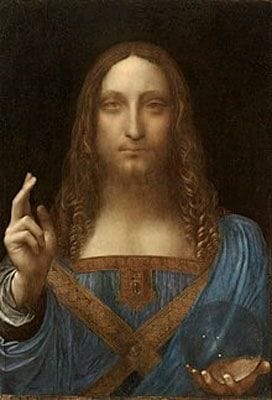
Salvatore Mundi
King Louis XVII of France is said to have commissioned Salvator Mundi after his conquest of Milan in 1499. The painting is a portrait of Jesus in the role of savior of the world and master of the cosmos. His right hand is raised with two fingers extended as he gives divine benediction. His left hand holds a crystalline sphere, representing the heavens. This is an unusual portrait in that it shows Christ, in very humanist fashion, as a man in contemporary Renaissance dress, gazing directly out at the viewer. It is also a half-length portrait, which was a radical departure from full-length portraits of the time. Jesus's "closeness" to us lends the visage an intense intimacy. The painting is representative of the mastery of Leonardo's signature techniques. The softness of the gaze, acquired through sfumato , lends a spiritual quality, inviting veneration from the viewer, while Jesus's face encompasses an emotion and expressiveness defined by the artist's acuity with anatomical correctness. The darkness from which he emerges contrasts with the light that seems to emanate from Jesus's exposed upper chest. Thus, the painting still (in spite of his humanist outer shell) presents Christ as an awe-inspiring "bringer of light". Salvator Mundi was unaccounted for between 1763 and 1900 when it was bought by one Sir Charles Robinson as a work by Bernardino Luini. It later sold at Sotheby's, London, in 1958 for £45 ($125). The painting, which was badly damaged, was then bought by an independent U.S. auction house in 2005. Having undergone extensive restoration, it reemerged in the early 2000s when it was confirmed as a work by Leonardo (though some experts still questioned it attribution). The painting was sold at auction at Christies New York in 2017 for $450 million a new record for an artwork at that time.
Oil on wood panel - Louvre, Abu Dhabi
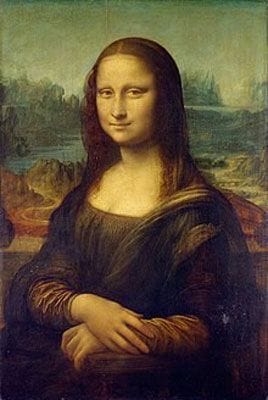
The Mona Lisa , also known as La Gioconda , is said to be a portrait of Lisa Gherardini, the wife of a Florentine merchant named Francesco del Gioconda. The half-length portrayal shows the sitter, seated on a chair with one arm resting on the chair and one hand resting on her arm. The use of sfumato creates a sense of soft calmness, which emanates from her being, and infuses the background. There has been much speculation as to its origin of location, yet it is more widely construed that it is imaginary, a composition born in Leonardo's mind (that could also allude to our admittance into Mona Lisa's dreamlike interior world). But it is of course Mona Lisa's enigmatic expression that transfixes the viewer and the eternal mystery of what's lying behind that iconic smile. Portraits of the time focused on presenting the outward appearance of the sitter, the personality of the subject only hinted at through symbolic objects, clothing, or gestures. Yet Leonardo desired to capture more than mere likeness. He wanted to show something of her soul, which he accomplished by placing emphasis on her peculiar and unconventional smile. As Gombrich observed, "We see that Leonardo has used the means of his ' sfumato ' with the utmost deliberation. Everyone who has ever tried to draw or scribble a face knows that what we call its expression rests mainly on two features: the corners of the mouth, and the corners of the eyes. Now it is precisely these parts which Leonardo has left deliberately indistinct, by letting them merge into a soft shadow. That is why we are never quite certain in what mood Mona Lisa is really looking at us. Her expression always seems just to elude us". Leonardo's painting is probably the most famous single painting in history. It has inspired many artists. Raphael drew upon it for a drawing in 1504, while countless writers have written about her, including the 19 th century French poet Theophile Gautier who called her "the sphinx who smiles so mysteriously." She has been the subject of many popular songs (most famously, perhaps, Mona Lisa, by Nat "King" Cole), and has been parodied in art, from the 1883 caricaturist's Eugene Bataille's, Mona Lisa smoking a pipe , to the 1919 Marcel Duchamp readymade showing her with a mustache and beard. In 1954, Salvador Dalí created his Self-portrait as Mona Lisa and in 1963 Andy Warhol included her in his seminal silkscreen output Mona Lisa "Thirty are better than one" . Her image has also been reproduced endlessly on postcards, calendars, posters, and all manner of other commercial products.
Oil on wood panel - Musée du Louvre, Paris
Biography of Leonardo da Vinci
Childhood and education.
Leonardo di ser Piero da Vinci, widely considered one of the most gifted and inventive men in history, was born in 1452 in a village near the town of Vinci, Tuscany.
The illegitimate son of Piero Fruosino di Antonio da Vinci, a Florentine notary and landlord, and Caterina, a peasant girl (who later married an artisan), Leonardo was brought up on the family estate in Anchiano by his paternal grandfather. His father married a sixteen-year old girl, Albiera, with whom Leonardo was close, but who died at an early age. Leonardo was the oldest of twelve siblings but was never treated as the illegitimate son. Like his siblings, Leonardo received a basic education in reading, writing and arithmetic, but he did not show his great passion for learning until adult life.
Early Training and Work
At the age of fourteen, Leonardo moved to Florence where he began an apprenticeship at the renowned workshop of Andrea del Verrocchio, an artist who himself had been a student of the Early Renaissance master Donatello . It is a matter of record that Leonardo also visited the nearby workshop of Antonio Pollaiuolo. Verrocchio was an important artist in the court of the Medici, a family noted equally for its political power and its generous patronage of the arts. Indeed, Florence attracted many talented young artists, including Domenico Ghirlandaio , Pietro Perugino, and Lorenzo di Credi and it is indicative of his father's civic standing that Leonardo was able to take up his apprenticeship in such a prestigious workshop.
Although Leonardo gained only a basic grasp of Latin and Greek, Florentine artists of this period were compelled to the study the humanities as a way of more fully understanding man's place in the modern world, and Leonardo's curious and skeptical mind was nurtured under Verrocchio's mentorship (as art historian E. H. Gombrich wrote, "At a time when the learned men at the universities relied on the authority of the admired ancient writers, Leonardo, the painter, would never accept what he read without checking it with his own eyes").
Leonardo's name would become closely associated with the intellectual movement/philosophy known as Renaissance Humanism . It promoted a return to the values and ideals of the classical world but also laid emphasis on what it was to "be human". Great focus was placed on "higher" education and the promotion of "civic virtue" in the belief that by reaching one's full potential - which the Renaissance artist achieved by becoming learned in aesthetic beauty, ethics, logic, and scientific and mathematical principles - one could advance civilization. Leonardo would more than measure up to the title of "renaissance man" through his passionate interest in the disciplines of art, anatomy, architecture, geometry, chemistry, and engineering.
In 1472, after six years of apprenticeship, Leonardo became a member of the Guild of St. Luke, a Florentine group of artists and medical doctors. Although his father had set him up with a workshop of his own, Leonardo - now regarded by many of his peers, according to Gombrich, "as a strange and rather uncanny being" - continued to work with Verrocchio as an assistant for a further four or five years.
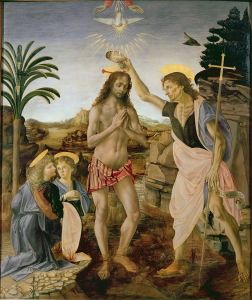
Customary to the times, the output of Verrocchio's workshop would have given rise to collaborative efforts between master and apprentice. Two pictures accredited to Verrocchio, The Baptism of Christ (1475) and The Annunciation (1472-75), are seen by art historians, such as the Renaissance chronicler, Giorgio Vasari , to evidence Leonardo's lighter brush strokes when compared with Verrocchio's heavier hand.
In 1476, Leonardo was accused of sodomy with three other men. Homosexuality was illegal and punishable, not only by imprisonment, but also by public humiliation and even death. Leonardo was acquitted through lack of corroborative evidence, which has been attributed to the fact that his friends/lovers came from powerful Florentine families. Perhaps because of the stigma and chastisement, Leonardo kept a low profile over the next few years, with little or no record of his activities during this time.
Leonardo's earliest commissions came in 1481 from the monastery of San Donato a Scopeto for a panel painting of the Adoration of the Magi (unfinished), and an altar painting for the St. Bernard Chapel in the Palazzo della Signoria (never begun). However, Leonardo stopped work on the commissions to move to Milan after accepting an offer from the city's Duke to join his court. He was listed in the royal register as pictor et ingeniarius ducalis ("painter and engineer of the duke").
There is some speculation as to why the move to Milan was so appealing to the artist when his Florentine career was in the ascendency. It may have been that his decision was to put the earlier sexual scandal behind him. While that may have been a contributory factor, it seems more likely that what the historian Ludwig Heinrich Heydenreich called Leonard's "gracious but reserved personality and elegant bearing" was a better fit for the austere Milanese Court. As Heydenreich writes, "It may have been that the rather sophisticate spirit of Neoplatonism prevailing in the Florence of the Medici went against the grain of Leonardo's experience-oriented mind and that the more strict, academic atmosphere of Milan attracted him. Moreover, he was no doubt enticed by Duke Ludovico Sforza's brilliant court and the meaningful projects awaiting him there".
Mature Period
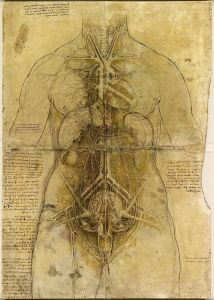
Leonardo worked in Milan between 1482 and 1499. Between 1483-86, he worked on the The Virgin of the Rocks , an altarpiece commissioned by the Confraternity of the Immaculate Conception. For reasons that are unknown, Leonardo entered into a decade-long legal dispute with the Confraternity (leading Leonardo to paint a second version of the work in 1508). In 1485, he undertook a diplomatic mission to Hungary on behalf of the Duke. He met with the influential Hungarian King, Matthias Corvinus, and worked on preparations for court festivals. While in Hungary he also worked on engineering and architectural plans, including for the dome of the cathedral in Milan.
While in Milan, Leonardo spent a great deal of time observing human anatomy. He closely studied the way in which human bodies moved, the way they were built and proportioned, how they interacted in social engagement and communication, and their habits of gesture and expression. This was a time-consuming and painstaking undertaking that helps explain perhaps why there are so few paintings dating from this period - just six in total, with suggestion of a further three commissions either now lost or never commenced - yet an extraordinarily large library of drawings. These are now testament to Leonardo's mastery of observation and his ability to convey human emotion.
It was during this period that he experimented with new and different painting techniques. One of the practices Leonardo is most famous for is his ability to create a "smoky" effect, which was coined sfumato . Through his deep knowledge of glazes and brushstrokes, he developed the technique, which allowed for edges of color and outline to flow into each other to emphasize the soft modulation of flesh or fabric, as well as the remarkable translucence of hard surfaces such as crystal or the tactility of hair. The intimate authenticity that resulted in his figures and subjects seemed to mirror reality in ways that had not been seen hitherto. A good example of this is his depiction of an orb in the painting Salvatore Mundi (1490-1500). It was during this period that Leonardo produced his great fresco masterpiece - what Gombrich called "one of the great miracles wrought by human genius" - The Last Supper (1495-98). It was painted on the dining hall wall of the convent of Santa Maria delle Grazie in Milan.
As an antidote to the beauty of his great masterpieces, Leonardo produced a series of drawings of deformed faces and bodies, perhaps the most famous of which are A Bald Fat Man with a Broken Nose (1485-90), and Grotesque Head of an old Woman (1489-90). The art historian Martin Kemp writes that Leonardo sometimes "followed ugly people around and drew them [in the belief] that the beautiful needed the grotesque [...] like light and shade". The art historian Jonathan Jones said of the former, meanwhile, that Leonardo's "repeated doodles of the same archetypal ugly visage [was] sometimes called his 'nutcracker' profile [...] This looks like a real man, and a fairly scary one: a street character, a violent, massive bald guy with a broken nose. And what makes it seem most real is that it is drawn quickly yet decisively, as in a sketch from life".
For his last unfinished project before leaving Milan, Leonardo was commissioned to cast a five-meter-high equestrian bronze sculpture - called Gran Cavallo - commemorating Francesco Sforza, the founder of the Sforza dynasty. In 1493, a clay model of the intended sculpture was displayed during the wedding of Emperor Maximilian to Bianca Maria Sforza, emphasizing the importance of the anticipated work. Unfortunately, the project was never finished and the conquering French Army, who had seized Milan in 1499, ended up using Leonardo's model for target practice. It is believed that the bronze reserved to cast the clay sculpture had been repurposed for cannon casting in what proved to be the unsuccessful defense of Milan against Charles VIII in the war with France.
Following the French invasion of Milan, and the overthrow of Duke Sforza in 1499, Leonardo left for Venice accompanied by his childhood friend and future assistant, Salai. In Venice, Leonardo was employed as a military engineer where his main commission was to design naval defense systems for the city under threat of a Turkish military incursion. Leonardo returned to Florence in 1500, where he received a warm and enthusiastic welcome. He lived as a guest of the Servite monks at the monastery of Santissima Annunziata. Leonardo was employed as a senior architectural advisor for a committee working on a damaged foundation at the church of San Francesco al Monte, but he devoted most of his time to studying mathematics.
In 1502, Leonardo secured service in the Court of Cesare Borgia, an important member of an influential family, as well as son of Pope Alexander VI, and commander of the papal army. He was employed as a "senior military architect and general engineer" and accompanied Borgia on his travels throughout Italy. His duties included making maps to aid with military defense, as well as designs for the construction of a dam to ensure an uninterrupted supply of water to the canals from the River Arno. During the diversion of the river project, he met Niccolò Machiavelli, who was a noted scribe and political observer for Florence. It has been said that Leonardo introduced Machiavelli to the concepts of applied science, and that he had a great influence on the man who would go on to be called the Father of Modern Political Science.
Leonardo returned for a second time to Florence in the spring of 1503 and was enthusiastically welcomed into the Guild of St. Luke. He worked on landscape sketches for a canal that would bypass the "choppy" Arno River and connect Florence directly with the sea. As Heydenreich notes, "The project, considered time and again in subsequent centuries, was never carried out, but centuries later the express highway from Florence to the sea was built over the exact route Leonardo chose for his canal". His return to Florence also spurred one of the most productive periods of painting for the artist including preliminary work on his Virgin and Child with Saint Anne (1503-19), the mural Battle of Anghiari (1503-05) (which was left unfinished and later copied by the artist Peter Paul Rubens ), and what was destined to become the world's most famous portrait, the Mona Lisa (1503-19). Of the latter, Gombrich wrote: "What strikes us first is the amazing degree to which Lisa looks alive. She really seems to look at us and to have a mind of her own. Like a living being, she seems to change before our eyes and to look a little different every time we come back to her [...] That great observer of nature knew more about the way we use our eyes than anybody who had ever lived before him".
In 1508, Leonardo returned to Milan where he remained for the next five years enjoying the generous patronage of Charles d'Amboise, the French Governor of Milan, and King Louis XII (of France). He was engaged in architectural projects, with notable commissions such as work on a Villa for Charles, bridge building, a project to create a waterway to link Milan with Lake Como, and preparatory sketches for an oratory for the church of Santa Maria alla Fontana.
Leonardo ran a successful studio which included his former Milanese pupils, de' Conti and Salai, and new recruits, Cesare da Sesto, Giampetrino, Bernardino Luini, and a young aristocrat named Francesco Meizi. Although he created little as a painter, Leonardo did undertake a second aborted sculptural commission from the military commander, Gian Giacomo Trivulzio. The preparatory sketches for the equestrian sculpture have survived, but the Trivulzio scrapped the project in favor of a more modest design.
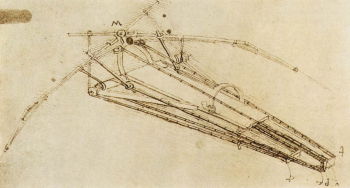
Leonardo's second Milan period is best known for his scientific activities. He collaborated with the renowned anatomist, Marcantonio della Torre, which led to Leonardo's precise drawings of the human body and his excursions in comparative anatomy (differences between species) and the related field of physiology. Meanwhile, his manuscripts of this time included mathematic, mechanical, geological, optical, and botanical studies. He created plans for his famous flying machine, and also devised military weapons such as an early example of the machine gun and a large crossbow. Gombrich suggested that there were two reasons that Leonardo "never published his writings, and that very few can even have known of their existence." The first was because "he was left-handed and had taken to writing from right to left so that his notes can only be read in a mirror". The second relates to the possibility that Leonardo "was afraid of divulging his discoveries [such as his observation the 'the sun does not move'] for fear that his opinions would be found heretical".
It was also during the second Milan period that Leonardo and Francesco Melzi, his favorite pupil, became close companions and remained so until Leonardo's death. It may be reasonably surmised that at this point in his life, Leonardo was finally able to live discreetly as a gay man, his accomplishments and acclaim providing a safe shelter from the kind of traumatic and punitive stigmatization he experienced in his earlier years in Florence.
Late Period
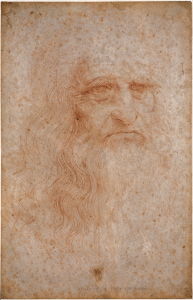
In 1513, after the temporary expulsion of the French from Milan, the sixty-year-old Leonardo relocated, taking Salai and Melzi with him, to Rome where he spent the next three years. He was given a generous stipend and residence in the Vatican by the Giuliano de' Medici, the brother of Leo X, the new pope. It was a depressing time for Leonardo, however, who struggled to secure any meaningful commissions. As Heydenreich writes, Leonardo arrived in Rome "at a time of great artistic activity: Donato Bramante was building St. Peter's, Raphael was painting the last rooms of the pope's new apartments, Michelangelo was struggling to complete the tomb of Pope Julius II, and many younger artists, such as Timoteo Viti and Sodoma, were also active".
Heydenreich refers to "drafts of embittered letters" which confirmed Leonardo's disquiet and unhappiness which restricted his activities largely to "mathematical studies and technical experiments or surveyed ancient monuments as he strolled through the city". However, Leonardo did produce a "magnificently executed map of the Pontine Marshes" and drawings for a planned Florentine residence for the Medici (who had returned to power in 1512).
While in Rome he also made the acquaintance of King François I of France who offered Leonardo the permanent position of "first painter, architect and engineer to the King" at the French Royal Court. François is credited with doing more than any other individual to promote Renaissance art and architecture in France and Leonardo, having accepted the King's invitation, lived out the last three years of his life (with Melzi) at a small, but palatial, residence at Clos Lucé, close to the king's residence at Château d'Amboise. Leonardo brought with him a large cache of paintings and drawings, most of which stayed in France after his death (and which are now housed in Le Louvre as part of the world's largest single collection of Leonardo's art).
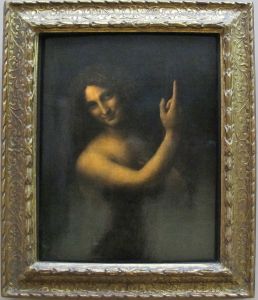
Leonardo did little painting in France, although his last painting, St John the Baptist (1513), was most likely made during this time. He worked on landscape plans for the palace gardens but all new work was abruptly halted following a region-wide outbreak of malaria. Leonardo found time to edit his scientific papers and to prepare his treatise on painting, including his Visions of the End of the World series which included his many cataclysmic storm drawings, known as the Deluges .
During these years, Leonardo and King François formed a close friendship - Vasari wrote that "The King ... was accustomed frequently and affectionately to visit him" - and, although he died shortly before construction began in earnest, it is likely that Leonardo designed the now famous double-helix staircase (two concentric spirals wind separately around a central column, allowing guests to pass without meeting while still being able to see one another through windows placed in a central column) of the Chateau de Chambord, a lavish Renaissance Chateau, commissioned by François (and which took 28 years to complete). Leonardo died on May 2, 1519 at Clos Lucé, naming Melzi as principal beneficiary of his estate.
It is down to Melzi's efforts that Leonardo's notebooks and drawings were saved. After Leonardo's death, Melzi returned to Milan where he was visited by Vasari. Referring to Melzi as his "much beloved" pupil, Vasari wrote that "he holds them [the notebooks] dear, and keeps such papers together as if they were relics". Leonardo's vineyards (sixteen rows) in Milan, a gift to Leonardo from Sforza in 1482 (confiscated during the French invasion but returned to Leonardo's ownership at a later unknown date) were divided between Salai and a former servant. (The vineyards remain an ongoing concern and a Leonardo Museum to this day.)
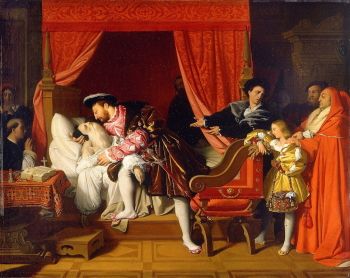
The reverence with which Leonardo was regarded is epitomized by the apocryphal story of François I's attendance at his death. Vasari described Leonardo as having "breathed [his] last in the arms of the king". Their legendary friendship inspired the 1818 painting by Ingres , François I Receives the Last Breaths of Leonardo da Vinci , in which Leonardo is shown as dying in the arms of the King.
Leonardo was originally interred in the chapel of St Florentin at the Chateau d'Amboise in the Loire Valley, but the building was destroyed during the French revolution. Although it is believed that he was reburied in the smaller chapel of St Hubert, Amboise, the exact location remains unconfirmed.
The Legacy of Leonardo da Vinci
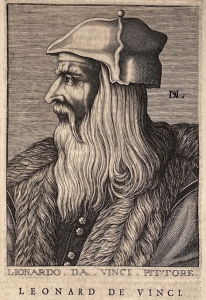
Leonardo's list of achievements is extensive. As a defining figure of the High Renaissance, he helped usher in a new dawning in Western art and civilization. Amongst his most influential techniques were his pioneering use of vanishing points, the soft clouding effect in his signature sfumato method, his profound understanding of the dynamics between light and dark in chiaroscuro , and the enigmatic facial expressions of his figures that created a mesmerizing and realistic quality. One can add to his paintings, his inventions, his precise anatomical and topographical drawings, as well as hydraulic and mechanical designs and his architectural achievements.
It is hard to encapsulate the achievements of an artist who, in the words of art historian Martin Kemp, had "got such a grip on people's imagination - whether they're engineers, medics, fans of art, or whatever". Nevertheless, Kemp gives us a good insight into Leonardo's genius through his account of the "spine tingling" privilege of studying the Mona Lisa on an easel (the painting having been temporarily released from its bulletproof glass casing). Kemp had been worried that the painting might have lost something of its uniqueness because of its excessive fame and overexposure. He need not have worried. "There is a sense of something happening between the picture and yourself", he said, and while acknowledging that his assessment "sounds entirely pretentious [...] it does happen". Kemp argued indeed, that when in the presence of the original work, "The picture becomes a kind-of living thing", and that any attempt to offer an analysis of Mona Lisa's aura was, in the end, a somewhat futile exercise.
Influences and Connections

Useful Resources on Leonardo da Vinci
- Leonardo's Legacy: How Da Vinci Reimagined the World By Shelley Frisch & Stefan Klein
- Leonardo Da Vinci: The Biography Our Pick By Walter Isaacson
- Leonardo da Vinci By Kenneth Clark and Martin Kemp
- The Young Leonardo: Art and Life in Fifteenth Century Florence By Larry J. Feinburg
- Leonardo Our Pick By Marten Kemp
- Leonardo da Vinci Rediscovered Our Pick By Carmen C. Bambach
- The Shadow Drawing: How Science Taught Leonardo How to Paint By Francesca Fiorani
- Leonardo da Vinci: The 100 Milestones By Martin Kemp
- Leonardo da Vinci: Anatomist Our Pick By Martin Clayton and Ron Philo
- The Story of Art By E. H. Gombrich
- Leonardo da Vinci By Ludwig Heinrich Heydenreich
- The Story of Modern Art By Norbert Lynton
- Illuminations By Walter Benjamin
- Leonardo's Notebook from 1508: Fully Digitized Our Pick Available online from the British Library
- Leonardo's Notebooks: Writing and Art of the Great Master By H. Anna Suh
- The Da Vinci Notebooks By Leonardo da Vinci
- Leonardo's Anatomical Drawings By Leonardo da Vinci
- Leonardo Da Vinci: Complete Paintings and Drawings By Johannes Nathan & Frank Zollner
- Leonardo da Vinci: The Complete Works By Simona Cremante
- Leonardo da Vinci: The Marvelous Works of Nature and Man By Martin Kemp
- Leonardo da Vinci: Complete Paintings (Revised) Our Pick By Pietro C. Marani
- The Last Leonardo: The Secret Lives of the World's Most Expensive Painting By Ben Lewis
- Leonardo da Vinci: The Complete Works
- Leonardo da Vinci: Paintings, Drawings, Quotes, Biography
- The lusts of Leonardo da Vinci By Jonathan Jones / The Guardian / Oct 19, 2011
- Leonardo da Vinci: The Biography by Walter Isaacson review - unparalleled creative genius By Blake Morrison / The Guardian / Dec 16, 2017
- The Secret Lives of Leonardo da Vinci By Claudia Roth Pierpont / The New Yorker / Oct 16, 2017
- What made Leonardo da Vinci a genius By Simon Worrall / November 4, 2017
- Psychology - The Smile of the "Mona Lisa" By Gustav Kobbé / The Lotus Magazine / November 1916
- Anatomy and Leonardo da Vinci Our Pick By Antony Merlin Jose / Yale Journal of Biology and Medicine / 2001
- Leonardo da Vinci and Fluid Mechanics By Ivan Marusic and Susan Broomhall / Annual Review of Fluid Mechanics / 2021
- Who was Leonardo da Vinci and what can we learn from him? By Nicola Davis / The Guardian / April 22, 2019
- The Mind of Leonardo Da Vinci Our Pick By Jonathan Pevsner / Scientific American / May 2, 2019
- 5 Surprising Things We Learned About Leonardo da Vinci From Historian Martin Kemp's New Online Masterclass By Menachem Wecker / Artnet / November 25, 2022
- The marvellous ugly mugs By Jonathan Jones / The Guardian / December 4, 2002
- Behind the Art: What hidden messages does Leonardo da Vinci's The Last Supper hold? By Khyati Rajvanshi / The Indian Express
- Secrets of Leonardo's 'Lady with an Ermine' Finally Revealed By Lorenza Munoz-Aloñso / Artnet
- Ginevra de' Benci National Gallery of Art in Washington, D.C.
- Leonardo da Vinci: Painter at the Court of Milan at National Gallery London
- Christie's: The Last Leonardo da Vinci - Salvator Mundi
- Smarthistory: Leonardo, The Mona Lisa - in the Renaissance and today Our Pick
- The Telegraph: Mystery of Leonardo Da Vinci's two Virgins
- Smarthistory: The Last Supper Our Pick
- Smithsonian Channel: Does 'The Last Supper' Really Have a Hidden Meaning?
- The Guardian: Leonardo da Vinci - An artist who deserves every bit of his fame
- Leonardo da Vinci: Renaissance Artist & Inventor | Mini Bio Our Pick
- Interesting Engineering: Leonardo da Vinci's brilliant mind Our Pick
- NBC News Learn: Leonardo Da Vinci, Renaissance Man
- History Documentary BBC: Leonardo DaVinci, behind a Genius Our Pick
- The Da Vinci Code 2003 Novel by Dan Brown
- The Da Vinci Code 2006 Film
- The Romance of Leonardo da Vinci 1900 Novel by Dimitri Mérejkowski / A fictionalized account of da Vinci's life
- The Secret Supper 2004 Novel by Javier Sierra / This fictional thriller revolves around da Vinci's painting The Last Supper
- Chiaroscuro: The Private Lives of Leonardo da Vinci 2005 Graphic Novel by Pat McGreal and David Rawson / Da Vinci's life and possible homosexual relationship with the young artist Salai are narrated in this comic book series
- Mr. Peabody and Sherman 2014 Film / In this animated children's film, da Vinci, his painting The Mona Lisa, and his flying machine, are central to the plot
- My Favorite Martian S03E28 1966 TV Program / In this episode, main character Martin calls on da Vinci to help fix his spaceship, and da Vinci is upset to learn that many of his inventions have been credited to other people throughout history
- Assassin's Creed: Brotherhood 2010 Video Game / In this game, da Vinci is a significant supporting character, outlining missions for players
Related Artists

Related Movements & Topics

Content compiled and written by Zaid S Sethi
Edited and revised, with Summary and Accomplishments added by Kimberly Nichols
Visiting Sleeping Beauties: Reawakening Fashion?
You must join the virtual exhibition queue when you arrive. If capacity has been reached for the day, the queue will close early.
Heilbrunn Timeline of Art History Essays
Leonardo da vinci (1452–1519).
A Bear Walking
- Leonardo da Vinci
The Head of a Woman in Profile Facing Left
Giovanni Antonio Boltraffio
The Head of the Virgin in Three-Quarter View Facing Right
Allegory on the Fidelity of the Lizard (recto); Design for a Stage Setting (verso)
The Head of a Grotesque Man in Profile Facing Right
After Leonardo da Vinci
Head of a Man in Profile Facing to the Left
Compositional Sketches for the Virgin Adoring the Christ Child, with and without the Infant St. John the Baptist; Diagram of a Perspectival Projection (recto); Slight Doodles (verso)
Studies for Hercules Holding a Club Seen in Frontal View, Male Nude Unsheathing a Sword, and the Movements of Water (Recto); Study for Hercules Holding a Club Seen in Rear View (Verso)
Carmen Bambach Department of Drawings and Prints, The Metropolitan Museum of Art
October 2002
Leonardo da Vinci (1452–1519) is one of the most intriguing personalities in the history of Western art. Trained in Florence as a painter and sculptor in the workshop of Andrea del Verrocchio (1435–1488), Leonardo is also celebrated for his scientific contributions. His curiosity and insatiable hunger for knowledge never left him. He was constantly observing, experimenting, and inventing, and drawing was, for him, a tool for recording his investigation of nature. Although completed works by Leonardo are few, he left a large body of drawings (almost 2,500) that record his ideas, most still gathered into notebooks. He was principally active in Florence (1472–ca. 1482, 1500–1508) and Milan (ca. 1482–99, 1508–13), but spent the last years of his life in Rome (1513–16) and France (1516/17–1519), where he died. His genius as an artist and inventor continues to inspire artists and scientists alike centuries after his death.
Drawings Outside of Italy, Leonardo’s work can be studied most readily in drawings. He recorded his constant flow of ideas for paintings on paper. In his Studies for the Nativity ( 17.142.1 ), he studied different poses and gestures of the mother and her infant , probably in preparation for the main panel in his famous altarpiece known as the Virgin of the Rocks (Musée du Louvre, Paris). Similarly, in a sheet of designs for a stage setting ( 17.142.2 ), prepared for a staging of a masque (or musical comedy) in Milan in 1496, he made notes on the actors’ positions on stage alongside his sketches, translating images and ideas from his imagination onto paper. Leonardo also drew what he observed from the world around him, including human anatomy , animal and plant life, the motion of water, and the flight of birds. He also investigated the mechanisms of machines used in his day, inventing many devices like a modern-day engineer. His drawing techniques range from rather rapid pen sketches, in The Head of a Man in Profile Facing to The Left ( 10.45.1) , to carefully finished drawings in red and black chalks, as in The Head of the Virgin ( 51.90 ). These works also demonstrate his fascination with physiognomy, and contrasts between youth and old age, beauty and ugliness.
The Last Supper (ca. 1492/94–1498) Leonardo’s Last Supper , on the end wall of the refectory of Santa Maria delle Grazie in Milan, is one of the most renowned paintings of the High Renaissance. Recently restored, The Last Supper had already begun to flake during the artist’s lifetime due to his failed attempt to paint on the walls in layers (not unlike the technique of tempera on panel), rather than in a true fresco technique . Even in its current state, it is a masterpiece of dramatic narrative and subtle pictorial illusionism.
Leonardo chose to capture the moment just after Christ tells his apostles that one of them will betray him, and at the institution of the Eucharist. The effect of his statement causes a visible response, in the form of a wave of emotion among the apostles. These reactions are quite specific to each apostle, expressing what Leonardo called the “motions of the mind.” Despite the dramatic reaction of the apostles, Leonardo imposes a sense of order on the scene. Christ’s head is at the center of the composition, framed by a halo-like architectural opening. His head is also the vanishing point toward which all lines of the perspectival projection of the architectural setting converge. The apostles are arranged around him in four groups of three united by their posture and gesture. Judas, who was traditionally placed on the opposite side of the table, is here set apart from the other apostles by his shadowed face.
Mona Lisa (ca. 1503–6 and later) Leonardo may also be credited with the most famous portrait of all time, that of Lisa, wife of Francesco del Giocondo, and known as the Mona Lisa (Musée du Louvre, Paris). An aura of mystery surrounds this painting, which is veiled in a soft light, creating an atmosphere of enchantment. There are no hard lines or contours here (a technique of painting known as sfumato— fumo in Italian means “smoke”), only seamless transitions between light and dark. Perhaps the most striking feature of the painting is the sitter’s ambiguous half smile. She looks directly at the viewer, but her arms, torso, and head each twist subtly in a different direction, conveying an arrested sense of movement. Leonardo explores the possibilities of oil paint in the soft folds of the drapery, texture of skin, and contrasting light and dark (chiaroscuro). The deeply receding background, with its winding rivers and rock formations, is an example of Leonardo’s personal view of the natural world: one in which everything is liquid, in flux, and filled with movement and energy.
Bambach, Carmen. “Leonardo da Vinci (1452–1519).” In Heilbrunn Timeline of Art History . New York: The Metropolitan Museum of Art, 2000–. http://www.metmuseum.org/toah/hd/leon/hd_leon.htm (October 2002)
Further Reading
Bambach, Carmen C., ed. Leonardo da Vinci, Master Draftsman . Exhibition catalogue.. New Haven: Yale University Press, 2003.
Additional Essays by Carmen Bambach
- Bambach, Carmen. “ Anatomy in the Renaissance .” (October 2002)
- Bambach, Carmen. “ Renaissance Drawings: Material and Function .” (October 2002)
Related Essays
- Anatomy in the Renaissance
- Architecture in Renaissance Italy
- Portraiture in Renaissance and Baroque Europe
- The Rediscovery of Classical Antiquity
- Renaissance Drawings: Material and Function
- Antonello da Messina (ca. 1430–1479)
- Arms and Armor in Renaissance Europe
- The Crucifixion and Passion of Christ in Italian Painting
- Drawing in the Middle Ages
- Dutch and Flemish Artists in Rome, 1500–1600
- Early Netherlandish Painting
- Filippino Lippi (ca. 1457–1504)
- Northern Italian Renaissance Painting
- The Papacy and the Vatican Palace
- Patronage at the Later Valois Courts (1461–1589)
- Peter Paul Rubens (1577–1640) and Anthony van Dyck (1599–1641): Paintings
- Rembrandt (1606–1669): Paintings
- Sixteenth-Century Painting in Emilia-Romagna
- Sixteenth-Century Painting in Lombardy
- Sixteenth-Century Painting in Venice and the Veneto
- Unfinished Works in European Art, ca. 1500–1900
- Venetian Color and Florentine Design
List of Rulers
- List of Rulers of Europe
- Central Europe (including Germany), 1400–1600 A.D.
- Florence and Central Italy, 1400–1600 A.D.
- France, 1400–1600 A.D.
- Rome and Southern Italy, 1400–1600 A.D.
- Venice and Northern Italy, 1400–1600 A.D.
- 15th Century A.D.
- Biblical Scene
- Central Italy
- High Renaissance
- The Last Supper
- Madonna and Child
- New Testament
- Religious Art
- Renaissance Art
- Scientific Instrument
- Virgin Mary
- Wall Painting
Artist or Maker
- Boltraffio, Giovanni Antonio
- Parmigianino
If you're seeing this message, it means we're having trouble loading external resources on our website.
If you're behind a web filter, please make sure that the domains *.kastatic.org and *.kasandbox.org are unblocked.
To log in and use all the features of Khan Academy, please enable JavaScript in your browser.
Europe 1300 - 1800
Course: europe 1300 - 1800 > unit 4, about leonardo.
- Letter to the Duke of Milan
- Leonardo: Anatomist - by Nature Video
- Leonardo and his drawings
- Virgin of the Rocks
- Adoration of the Magi
- “Vitruvian Man”
- Virgin and Child with St Anne and St John the Baptist (Burlington House Cartoon)
- The Last Supper
The heavens often rain down the richest gifts on human beings, but sometimes they bestow with lavish abundance upon a single individual beauty, grace and ability, so that whatever he does, every action is so divine that he distances all other men, and clearly displays how his greatness is a gift of God and not an acquirement of human art. Men saw this in Leonardo. (Vasari, Lives of the Most Excellent Painters, Sculptors, and Architects )
Leonardo: from Florence to Milan
Having until now sufficiently studied and examined the experiments of all those who claim to be experts and inventors of war machines, and having found that their machines do not differ in the least from those ordinarily in use, I shall make so bold, without wanting to cause harm to anyone, as to address myself to Your Excellency to divulge my secrets to him, and offer to demonstrate to him, at his pleasure, all the things briefly enumerated below.
In time of peace, I believe I am capable of giving you as much satisfaction as anyone, whether it be in architecture, for the construction of public or private buildings, or in bringing water from one place to another. Item, I can sculpt in marble, bronze or terracotta; while in painting, my work is the equal of anyone’s.

Return to Florence, then France
Leonardo’s death and the changing status of the artist.
Finally, having grown old, he remained ill many months, and, feeling himself near to death, asked to have himself diligently informed of the teaching of the Catholic faith, and of the good way and holy Christian religion; and then, with many moans, he confessed and was penitent; and although he could not raise himself well on his feet, supporting himself on the arms of his friends and servants, he was pleased to take devoutly the most holy Sacrament, out of his bed. The King, who was wont often and lovingly to visit him, then came into the room; wherefore he, out of reverence, having raised himself to sit upon the bed, giving him an account of his sickness and the circumstances of it, showed withal how much he had offended God and mankind in not having worked at his art as he should have done. Thereupon he was seized by a paroxysm, the messenger of death; for which reason the King having risen and having taken his head, in order to assist him and show him favour, to then end that he might alleviate his pain, his spirit, which was divine, knowing that it could not have any greater honour, expired in the arms of the King. (Vasari)
Leonardo's Naturalism
Want to join the conversation.
- Upvote Button navigates to signup page
- Downvote Button navigates to signup page
- Flag Button navigates to signup page

Leonardo da Vinci
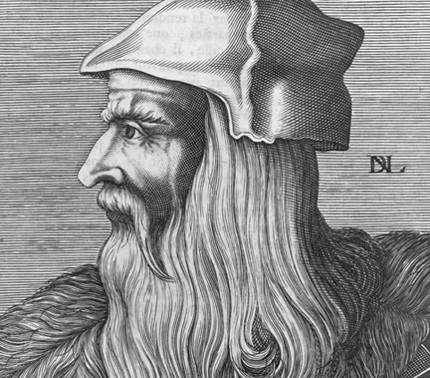
Early years
Painter, sculptor, architect, designer, theorist, engineer and scientist, Leonardo da Vinci created some of the most famous images in European art. Though many of his works were never finished, and even fewer have survived, he influenced generations of artists and he continues to be revered as a universal genius. Leonardo was born near the Tuscan hill-town of Vinci. An illegitimate child, he was raised by his paternal grandfather. His father had a flourishing legal practice in the city of Florence, where Leonardo received his early artistic training with the sculptor Andrea Verrocchio . Verrocchio's workshop undertook a wide range of commissions including sculpture and decorative metalwork as well as paintings.
Frustrated in Florence
By 1472, Leonardo had joined the brotherhood of Florentine artists, the Compagnia di San Luca, and he worked in Florence for the next ten years, but few paintings survive. He made numerous drawings, however, which revealed his growing interest in other disciplines, including geometry, anatomy and engineering. By 1483, Leonardo felt stifled and decided that Milan would offer more exciting opportunities. He wrote to the ruling family, the Sforzas, asking for employment primarily on the grounds that he was an expert in military engineering. He mentioned his skill in painting and sculpture as an added bonus. Soon after his move to Milan, a confraternity commissioned an altarpiece, and Leonardo created 'The Virgin of the Rocks' . When they refused to give what he considered a fair price for the painting, he sold it to someone else in disgust and it was some years before the confraternity could persuade him to do a second version - the one that now hangs in the National Gallery.
The notebooks
Leonardo kept notebooks of his research into science, biology, anatomy, engineering and art. (He was particularly keen on flying machines, and came up with a design for a type of helicopter, although it was never built.) The books were filled with drawings and diagrams, and covered with notes written in mirror handwriting and he kept them for the rest of his life. Leonardo's major artistic achievement at this time was his depiction of 'The Last Supper', which he painted for the wall of the refectory of Santa Maria della Grazie. 'The Last Supper' perfectly illustrates Leonardo's belief that poses, gestures and facial expressions should reflect the 'motions of the mind'.
Milan, Rome and France
In 1499 the French army invaded Milan and Leonardo returned to Florence. He was fascinated by the mystery of the face and by the possibility of reading the 'motions of the soul' through facial expressions and gesture. Leonardo's portrait of the wife of a Florentine official, known as the 'Mona Lisa' is famous for its sitter's enigmatic expression. Leonardo soon tired of Florence however, and by the summer of 1508 he was back in Milan, working for the French rulers of the city. He began work on a series of compositions of the Virgin and Child. Before beginning a painting, he would work out his composition in a drawing - the famous Burlington House Cartoon is a preparatory work for a painting now in the Louvre, Paris. This second period in Milan lasted until 1513 and was followed by three years in Rome. At some point during this period he was brought to the attention of the French king and was offered employment as 'first painter and engineer' at the royal court. Leonardo accepted the offer and in 1517 he moved to the Chateau of Cloux, near Amboise, where he spent the rest of his life.
Final years
Towards the end of his life, Leonardo was plagued by ill-health and a stroke left him paralysed down the right side of his body. Despite this, his notebooks reveal that he was surprisingly active, though it is likely that his assistants carried out most of the physical work. However, his mood deteriorated and he is thought to have been dogged by a persistent and overwhelming sense of pessimism. He became increasingly obsessed with his experiments and scientific projects. These interfered with his artistic commissions and he became even more notorious for not finishing anything. He completed so few works in his lifetime that a whole industry sprang up around the search for 'real Leonardos' with many pastiches and copies being paraded as originals. In April 1519 Leonardo, now 67, drew up his will. He left most of his works to his adored pupil and companion, Francesco Melzi. He died later that year and was buried in Amboise.
Paintings by Leonardo da Vinci
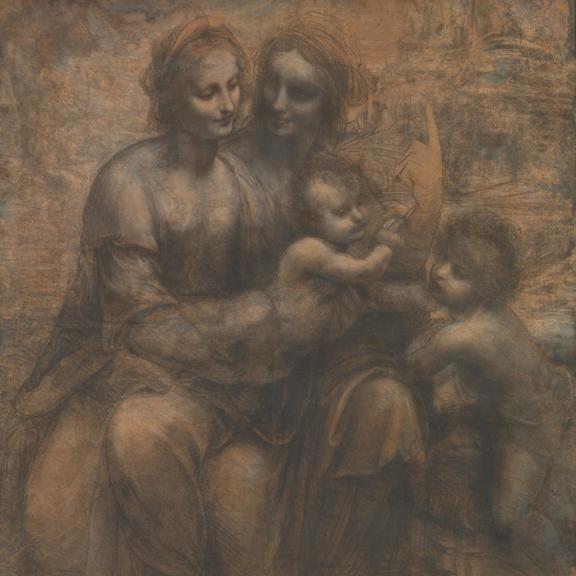
Biography of Leonardo da Vinci, Inventor and Artist of the Renaissance
Victor Ovies Arenas / Getty Images
- Art History
- Architecture
- M.A., Anthropology, University of Iowa
- B.Ed., Illinois State University
Leonardo da Vinci (April 15, 1452–May 2, 1519) was an artist, humanist, scientist, philosopher, inventor, and naturalist during the Italian Renaissance . His genius, says his biographer Walter Isaacson, was his ability to marry observation with imagination and to apply that imagination to intellect and its universal nature.
Fast Facts: Leonardo da Vinci
- Known For : Renaissance-era painter, inventor, naturalist, philosopher, and writer
- Born : April 15, 1452 in Vinci in Tuscany, Italy
- Parents : Piero da Vinci and Caterina Lippi
- Died : May 2, 1519 in Cloux, France
- Education : Formal training limited to "abacus school" in commercial math, an apprenticeship at the workshop of Andrea del Verrocchio; otherwise self-taught
Leonardo da Vinci was born in the village of Vinci in Tuscany, Italy, on April 15, 1452, the only child of Piero da Vinci, a notary and eventually chancellor of Florence, and Caterina Lippi, an unmarried peasant girl. He is properly known as "Leonardo" rather than "da Vinci," although that is a common form of his name today. Da Vinci means "from Vinci" and most people of the day who required a last name were given it based on their place of residence.
Leonardo was illegitimate, which, according to biographer Isaacson, may well have assisted his skill and education. He was not required to go to formal school, and he passed his youth in experimentation and exploration, keeping careful notes in a series of journals that have survived. Piero was a well-to-do man, descended from at least two generations of important notaries, and he settled in the town of Florence. He married Albierra, the daughter of another notary, within eight months of Leonardo's birth. Leonardo was raised in the da Vinci family home by his grandfather Antonio and his wife, along with Francesco, Piero's youngest brother only 15 years older than his nephew, Leonardo himself.
Florence (1467–1482)
In 1464, Albierra died in childbirth—she had no other children, and Piero brought Leonardo to live with him in Florence . There, Leonardo was exposed to the architecture and writings of the artists Filippo Brunelleschi (1377–1446) and Leon Battista Alberti (1404–1472); and it was there that his father got him an apprenticeship to the artist and engineer Andrea del Verrocchio. Verrocchio's workshop was part art studio and part art shop, and Leonardo was exposed to a rigorous training program that included painting, sculpture, pottery, and metalworking. He learned the beauty of geometry and the mathematical harmony that art can leverage. He also learned chiarroscuro and developed the sfumato technique for which he would become famous.
When his apprenticeship ended in 1472, Leonardo registered in the Florentine painter's confraternity, the Compagnia di San Luca. Many of the works he did in Verocchio's workshop were often completed by several of the students and/or the teacher, and it is clear that by the end of his tenure, Leonardo had surpassed his master.
Verocchio's workshop was sponsored by the duke of Florence, Lorenzo de' Medici (1469–1492), also known as Lorenzo the Magnificent. Some of the works painted by Leonardo in his 20s include the "Annunciation" and the "Adoration of the Magi," and the portrait of "Ginevra di Benci."
Milan (1482–1499)
When Leonardo turned 30, he was sent by Lorenzo on a diplomatic mission to bring a lute in the shape of a horse's head that he himself had crafted to be given to Ludovico Sforza, the powerful duke of Milan. With him was Atalante Migliorotti (1466–1532), the first of his long-term companions who acted as a friend, assistant, secretary, and romantic partner.
When Leonardo arrived in Milan, he sent a letter to Ludovico, a letter that was more or less a job application, laying out in detail the type of job he envisioned being useful to the duke: military and civil engineering. Instead, Leonardo ended up an impresario, producing elaborate pageants for the royal court such as the "Masque of the Planets." He designed scenery and costumes and developed fantastic mechanical elements for the plays that would fly, descend, or animate for the audience. In this role, he was part court jester: he sang and played the lute, told stories and fables, played pranks. His friends described him as gentle and entertaining, handsome, precise, and generous, a valued and beloved companion.
The Genius in the Notebook
It was also during this period that Leonardo began keeping regular notebooks. More than 7,200 single pages exist today, estimated to be one-quarter of his total output. They are filled with expressions of sheer genius: flights of fancy, precognitive sketches of impossible technologies (scuba gear, flying machines, helicopters); careful, analytical anatomical studies of dissections he performed on humans and animals; and visual puns. In his notebooks and his canvases, he played with shadow and light, perspective, motion, and color. His drawings of humans at the time are fascinating: an old warrior with a nutcracker nose and an enormous chin; grotesquely old men and women; and a thin, muscular, curly-haired androgynous figure, the opposite avatar of the old warrior who would provide centuries of delight and speculation for art historians.
Of course, he painted while he was in Milan: portraits included several of Ludovico's mistresses, "The Lady with the Ermine and La Belle Ferronnière," and religious works such as "Virgin of the Rocks" and the astonishing "Last Supper." He also made the famous drawing "Vitruvian Man," the best of numerous attempts of the day to illustrate what the Roman architect Vitrivius (c. 80–15 BCE) meant when he said the layout of a temple should reflect the proportions of a human body. Leonardo ditched most of Vitrivius' measurements and calculated his own ideal of perfection.
In 1489, Leonardo finally earned the job he had wanted in 1482: he received an official court appointment, complete with rooms (albeit not at Ludovico's castle). His first commission was to make an immense sculpture of the duke of Milan's father Francesco sitting on a horse. He made the model of clay and worked for years planning the casting, but never completed the bronze sculpture. In July 1490, he met the second companion of his life, Gian Giacomo Caprotti da Oreno, known as Salai (1480–1524).
By 1499, the duke of Milan was running out of money and no longer consistently paying Leonardo, and when Louis XII of France (1462–1515) invaded Milan, Ludovico fled the city. Leonardo stayed in Milan briefly—the French knew him and protected his studio from the mobs—but when he heard rumors that Ludovico was planning to return, he fled home to Florence.
Italy and France (1500–1519)
When Leonardo returned to Florence, he found the city still shaken from the after-effects of the brief and bloody rule of Savonarola (1452–1498), who in 1497 had led the "Bonfire of the Vanities"—the priest and his followers collected and burned thousands of objects such as artworks, books, cosmetics, dresses, mirrors, and musical instruments as forms of evil temptations. In 1498, Savonarola was hanged and burned in the public square. Leonardo was a different man when he returned: he dressed like a dandy, spending almost as much on clothing as he did on books. His first patron was the notorious military ruler Cesare Borgia (1475–1507), who conquered Florence in 1502: Borgia gave Leonardo a passport to travel wherever he needed, as his personal engineer and innovator.
The job only lasted about eight months, but during that time Leonardo built a bridge supporting a garrison of troops out of a pile of lumber and nothing more. He also perfected the art of maps, drawing villages as they would be seen from the air, accurate, detailed birds-eye views of cities measured with a compass. He also established a friendship with Niccolo Machiavelli (1469–1527), who would base his classic "The Prince" on Borgia. By 1503, though, Borgia was running amok, requiring mass executions in the towns he occupied. At first, Leonardo seemed oblivious, but when Machiavelli left, so did Leonardo: back to Florence.
In Florence, Leonardo and Machiavelli worked on an astonishing project: they planted to divert the Arno river from Pisa to Florence. The project got started, but the engineer changed the specs and it was a spectacular failure. Leonardo and Machiavelli also worked on a way to drain the Piombino Marshes: the movement and force of water was a fascination for Leonardo throughout his life, but the marsh project was also not completed.
Michelangelo
Artistically, Florence had a huge drawback: Leonardo had acquired a nemesis, Michelangelo . Twenty years younger, Michelangelo was a pious Christian convulsed by agony over his nature. The two artists' communication devolved into a bitter feud. The two men were each commissioned to do battle scenes: hung in separate galleries, the paintings were depictions of frenzied faces, monstrous armor, and mad horses. Isaacson suggests that the upshot of the war of the battle scene was useful to both artists because they were now both luminaries, rather than interchangeable parts.
From 1506–1516, Leonardo wandered back and forth between Rome and Milan; another one of his patrons was the Medici Pope Leo X (1475–1521). In 1506, Leonardo adopted Francesco Melzi, the 14-year-old son of a friend and civil engineer, as his heir. Between 1510 and 1511, Leonardo worked with anatomy professor Marcantonio della Torre, whose students dissected humans while Leonardo made 240 meticulous drawings and wrote 13,000 words of description—and probably more, but those are what survived. The professor died of the plague, ending the project before it could be published.
And of course, he painted. His masterpieces during this period in his life include the "Mona Lisa" ("La Gioconda"); "The Virgin and Child with St. Anne," and a series of images of Salai as St. John the Baptist and Bacchus.
In 1516, Francis I of France commissioned Leonardo for another astounding, impossible task : design a town and palace complex for the royal court at Romorantin. Francis, arguably one of the best patrons Leonardo ever had, gave him the Chateau de Cloux (now the Clos Luce). Leonardo was by now an old man, but he was still productive—he made 16 drawings over the next three years, even if the city project was not completed—but he was visibly ill and had likely suffered a stroke. He died on May 2, 1519, at the Chateau.
- Clark, Kenneth and Martin Kemp. "Leonardo da Vinci: Revised Edition." London, Penguin Books, 1989.
- Isaacson, Walter. "Leonardo Da Vinci." New York: Simon & Schuster, 2017.
- Farago, Claire. "Biography and Early Art Criticism of Leonardo da Vinci." New York: Garland Publishing, 1999.
- Nicholl, Charles. "Leonardo da Vinci: Flights of the Mind." London, Penguin Books, 2005.
- What Was Leonardo's Name?
- La Bella Principessa by Leonardo da Vinci
- Leonardo da Vinci - The Paintings
- Was Leonardo Da Vinci a Vegetarian?
- Leonardo's Last Years
- Inventions of Leonardo da Vinci
- Leonardo, Michelangelo & Raphael: Art of the Italian High Renaissance
- Key Dates in Renaissance Philosophy, Politics, Religion, and Science
- Is Mary Magdalene in Da Vinci's 'The Last Supper?'
- Biography of Isabella d'Este, Patron of the Renaissance
- Leonardo da Vinci Quotes
- Biography of Sandro Botticelli, Birth of Venus Painter
- Leonardo da Vinci's 'Study of Hands'
- Why Is the Mona Lisa So Famous?
- Top 12 Greatest Visual Artists of All Time
- Michelangelo Portrait Gallery

Leonardo da Vinci – The Life and Artworks of Leonardo da Vinci
Leonardo da Vinci was a prime example of the kind of person who, throughout the Italian High Renaissance, was completely committed to studying the humanities in order to continuously improve himself as a member of society. Although Leonardo da Vinci’s accomplishments span many different principles and mediums, he is most well-known for his paintings, such as the Leonardo da Vinci portrait known as the Mona Lisa (1503). So, where was Leonardo da Vinci born? Where did he die? In this article, we will take a look at Leonardo da Vinci’s biography and answer these questions and more.
Table of Contents
- 1.1 Childhood and Education
- 1.2 Early Training and Work
- 1.3.1 Development of Techniques
- 1.3.2 Continuing Work for Monarchs
- 1.3.3 Interest in Science
- 1.4 Late Period
- 2.1 Leonardo da Vinci’s Accomplishments
- 3 Notable Leonardo da Vinci Artworks
- 4.1 Leonardo da Vinci: Notebooks (2008) by Leonardo da Vinci
- 4.2 The Complete Notebooks of Leonardo da Vinci (2016) by Leonardo da Vinci
- 5.1 Where Was Leonardo da Vinci Born?
- 5.2 What Was Leonardo da Vinci Known For?
Leonardo da Vinci’s Biography
Leonardo da Vinci’s insatiable curiosity and creative imagination used both of his brain’s left and right sides to their full potential to create a number of innovations that were far ahead of their time. The earliest sketches that predicted the helicopter, parachute, and military tank are attributed to him. His journals are almost as well-regarded as his works of art. They feature scientific graphs, sketches, and painting ideas and are a summation of his life’s work and brilliant intellect.
Today, scholars, artists, and scientists from all around the world continue to admire and study them.
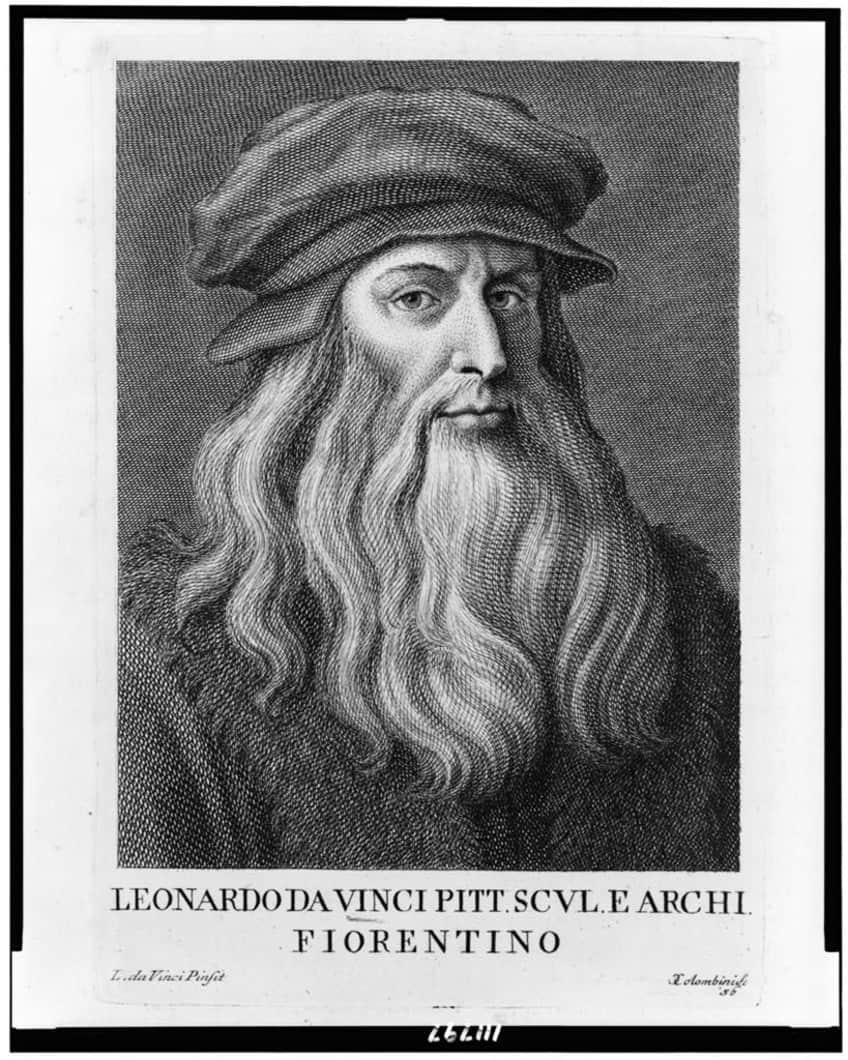
Childhood and Education
In a hamlet close to the Tuscan town of Vinci, Leonardo da Vinci – one of the most talented and creative people in history – was born in 1452. The son of a Florentine attorney named Piero da Vinci and a poor farm girl named Caterina, he was raised by his grandfather on the family estate in Anchiano. Leonardo da Vinci was close to Albiera, a 16-year-old girl his father wedded but who passed away early.
Leonardo da Vinci was the eldest of 12 children, and his family never treated him any differently for being born out of wedlock.

Early Training and Work
Leonardo da Vinci relocated to Florence at the age of 14 to pursue a traineeship with Andrea del Verrocchio, a painter who had studied under Donatello, a prodigy of the Early Renaissance . Verrocchio was a significant artist at the court of the Medici, a wealthy family that is sometimes credited with fostering the Renaissance through its lavish support of the arts and political participation . Pietro Perugino, Domenico Ghirlandaio, and Lorenzo de Credi were among the many outstanding young artists who were drawn to Florence, an important creative hub in Renaissance Italy.
Leonardo da Vinci’s ability to start his apprenticeship in such a famous art studio is a sign of his father’s clout in the community.

In order to completely comprehend man’s role in the world, artists of this era immersed themselves in the humanities. Leonardo da Vinci had considerable mentoring from Verrocchio, who helped to develop his early talent. He became interested in biology, architecture, chemistry, arithmetic, and engineering in addition to sketching, painting, and sculpting.
This schooling helped him develop a keen imagination that subsequently led to the design of wonderful inventions, as seen by the numerous sketches of mechanical devices and military weaponry that serve to maintain his image as a genius today.
The production of Verrocchio’s workshop would have been a joint effort between the apprentices and the master, as was customary at the period. Art historians, such as Giorgio Vasari , believe that some paintings attributed to Verrocchio really show traces of Da Vinci’s softer brushstrokes contrasted with the heavier hand of Verrocchio. After serving as an apprentice for six years, Da Vinci joined the Guild of St. Luke, an organization of Florentine painters and physicians, in 1472. Although his father provided him with a workshop of his own, Da Vinci spent the following four years working as an assistant at Verrocchio’s workshop.
Leonardo da Vinci was suspected of sodomy in 1476 together with three other men, but due to a lack of supporting evidence, he was exonerated. This is sometimes linked to the fact that Leonardo da Vinci’s associates hailed from wealthy families. At the time, homosexuality was against the law and could result in death as well as jail and public disgrace. He may have kept a low profile during the following several years, about which not much is known, due to the consequence that came after such a terrible incident.
The monks of San Donato a Scopeto provided him with one of his first solo contracts to depict the Adoration of the Magi between 1480 and 1482. After accepting a job offer from the Duke of Milan to serve in his court, Da Vinci would pause work on the commission to relocate to Milan. Many theories have been put up as to why the shift to Milan was required at this particular time, some of which refer to the sodomy charge from a few years before.
However, it is more probable that Da Vinci was lured by the extravagant Milanese Court’s invitation and the chance to advance his name and profession.

Mature Period
From 1482 through 1499, Da Vinci was employed by the Milanese Court. He was a well-known perfectionist who devoted a lot of time to studying human anatomy, especially how people’s bodies moved, were assembled, and were proportioned, how they interacted with one another during social interactions and communication, as well as how they expressed themselves through gestures.
This was undoubtedly a laborious process, which may explain in part why there are so few completed works despite an extraordinary amount of intricately detailed sketches and drawings that served as full-scale preliminary drawings for canvases.
In addition to demonstrating his unmatched powers of observation, these sketches also demonstrate his aptitude as an artist for deciphering and expressing human emotion.

Development of Techniques
Leonardo da Vinci dabbled with profoundly novel and distinctive painting approaches throughout this time. The artist is renowned for a number of skills, including his ability to produce the smokey effect known as sfumato .
He created a method that enabled margins of color and outline to merge together to accentuate the gentle variation of skin and material as well as the astonishing translucence of hard surfaces like crystal or the textures of hair through his in-depth understanding of brushstrokes and glazes.
Leonardo da Vinci’s themes and characters had an intimate genuineness that seemed to reflect reality in novel ways. Da Vinci’s painting, Salvator Mundi (1500), in which he depicts an orb, is a good illustration of this.
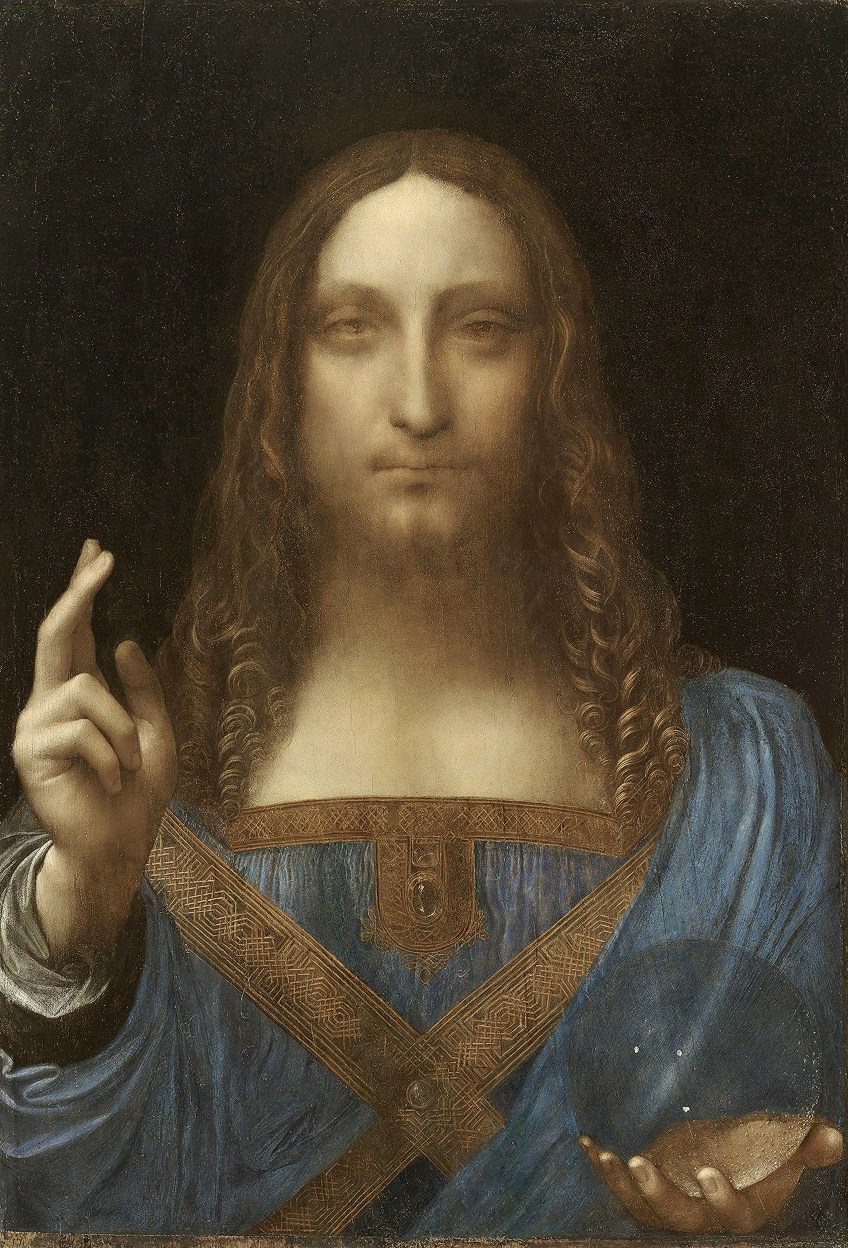
However, some of his experiments, like many other ground-breaking breakthroughs, would only become problematic afterward. The Last Supper (1498), one of his greatest fresco masterpieces of the time, was the most outstanding.
However, Da Vinci had used oil paints on wet plaster to create the sfumato aesthetic, which finally caused the pigment to peel off the refectory wall of the monastery of Santa Maria del Grazie in Milan.

He was sent on a mission to meet the powerful Matthias Corvinus, King of Hungary, in 1485 on behalf of the duke. While there, he was required to use his rigorous creative abilities to start preparing court festivals as well as architectural and engineering projects, such as the Milan cathedral’s dome design .
Continuing Work for Monarchs
Leonardo da Vinci was commissioned to produce a five-meter-high equine bronze sculpture named Gran Cavallo in 1482 honoring the founder of the Sforza family as his final unfinished project before departing Milan.
During Emperor Maximilian’s wedding to Bianca Maria Sforza in 1503, a clay model of the planned sculpture was presented, stressing the significance of the upcoming work.
However, the project was never completed, and the victorious French Army used the figure for target practice after taking Milan in 1499. According to legend, the bronze intended for the sculpture was reused for cannon production during the inevitable failure of Charles VIII’s defense of Milan during the war with France.
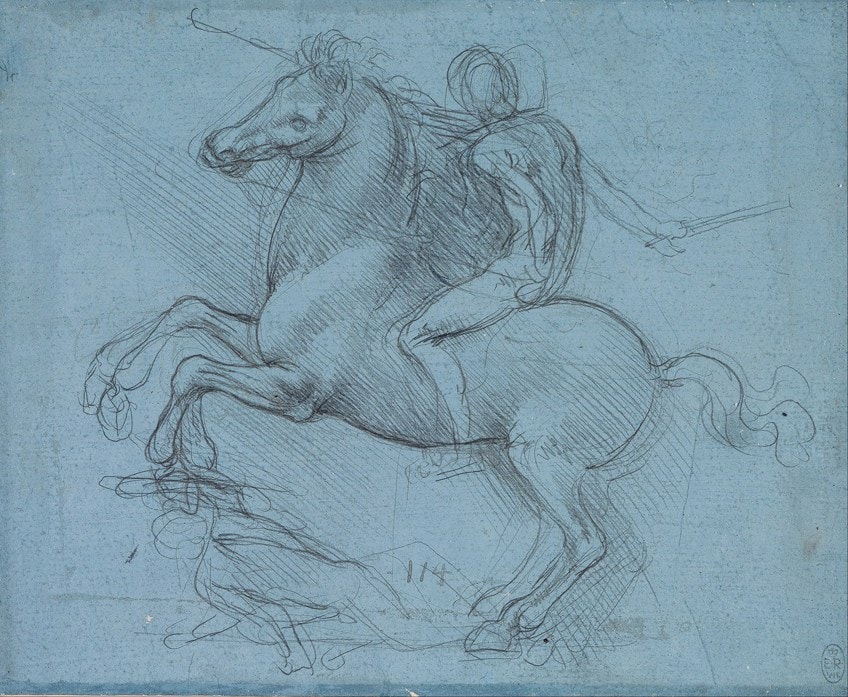
After the 1499 French invasion and the fall of the Duke of Milan, Da Vinci traveled to Venice with Salai, his long-time companion, and helper who had lived with Da Vinci since he was 10 years old and stayed with him until his death. Da Vinci worked as a military engineer at Venice, where his major task was to construct naval defensive systems for the city, which was under threat from Turkish military advancements in Europe. He returned to Florence in 1500, where he resided as a visitor of the Servite monks in the abbey of Santissima Annunziata with his partner.
Da Vinci obtained employment at the Court of Cesare Borgia, a prominent member of a powerful family, in addition to being the son of Pope Alexander VI and leader of the papal army, in 1502. As a military engineer, he followed Borgia on his travels around Italy.
His responsibilities included creating maps to help in military defense and building a dam to assure an unbroken flow of water from the River Arno to the canals.
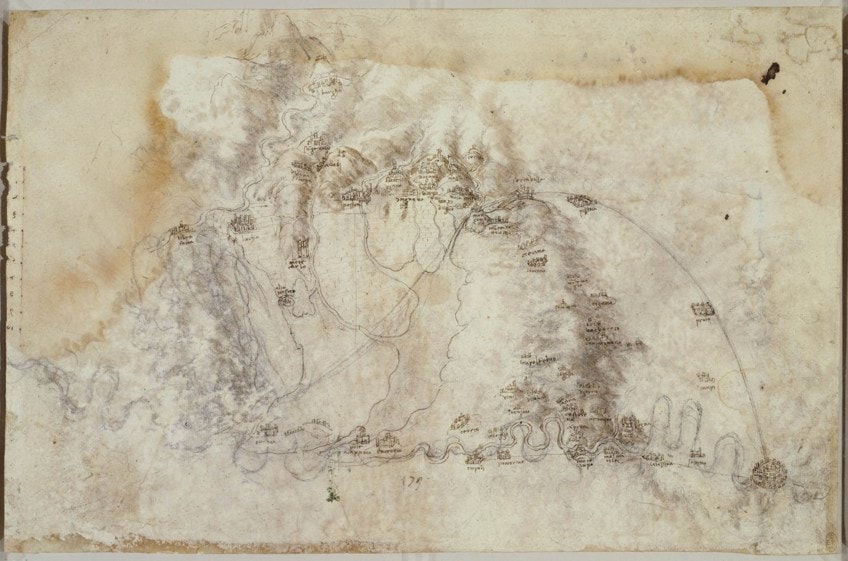
Interest in Science
During the river diversion project, he met Niccolò Machiavelli, a prominent writer, and political analyst for Florence at the time. Leonardo da Vinci is considered to have introduced Machiavelli to the notions of applied science.
Thus, Da Vinci seemed to have made a significant effect on the man who would go on to be referred to as the founder of modern political science.
In 1503, Da Vinci came to Florence for the second time and was greeted as a superstar when he rejoined the Guild of St Luke. This homecoming triggered one of the artist’s most creative years of artwork, such as preparatory work on his Virgin and Child with Saint Anne (1519).

Da Vinci returned to Milan in 1508, where he spent the following five years under the sponsorship of the French Governor of Milan, Charles d’Amboise, and King Louis XII. During this time, he was highly involved in scientific pursuits such as anatomical, mathematical, mechanical, and botanical research, as well as the development of his renowned flying machine.
During this time, notable projects included the development of a villa for Charles, bridge construction, and a project to develop a canal between Lake Como and Milan.
He also invented effective military weapons, including an early prototype of the machine gun and his well-known huge crossbow. During this period, Da Vinci also met his apprentice Francesco Melzi, who became his partner until his death. It’s possible that at this moment in his career and life that Da Vinci was eventually able to live openly as a homosexual man, his successes and renown offering a safe haven from the type of painful and punishing stigmatizing he faced in his youth.
Late Period
After the French were temporarily expelled from Milan in 1513, Da Vinci traveled to Rome and spent the next three years there. He was called to the attention of French King François I, who gave him a permanent post as the French Royal Court’s principal artist and engineer. He was sent to Clos Lucé, near the king’s Château d’Amboise. François I, a significant character in the French Renaissance, would not only become the kind of patron Da Vinci required in his later years, requiring little of Da Vinci’s time but he was also said to be a good friend of the artist. “The King was accustomed to regularly and cordially seeing him,” Vasari said of the bond.
Leonardo da Vinci spent much of his last years organizing his scientific papers and notes rather than painting.
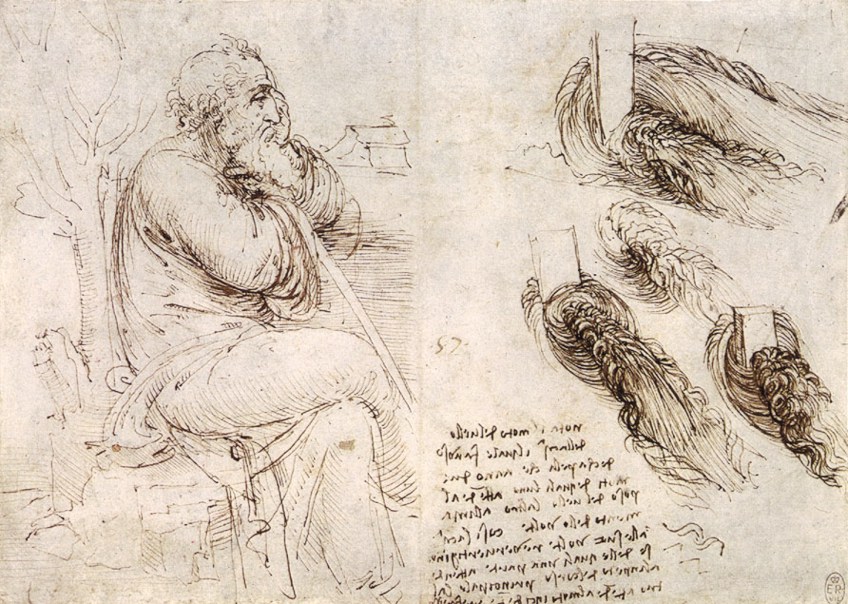
His final picture, St John the Baptist (1513), was most likely completed around this time. This collection of notes, reflecting a lifetime’s worth of outstanding research and aptitude throughout a wide range of fields, has proven to be his most lasting legacy.
His views on mathematics, architecture, engineering, human anatomy, and physics, as well as his perspective on art and Humanism, demonstrated a depth of brilliance that earned him the title of real genius.

Leonardo da Vinci passed away on the 2nd of May, 1519, in Clos Lucé, leaving his artistic and academic assets to his partner, Francesco Melzi. Salai and his brothers shared ownership of his vines. The mythical narrative of François I attending his death epitomizes the veneration with which he was held.
“Leonardo da Vinci breathed his last breath in the arms of the monarch,” according to Vasari.
Leonardo da Vinci was buried at the church of St Florentin at the Chateau d’Amboise, but the structure was damaged due to the effects of the French Revolution . While it is thought he was reburied at the smaller chapel of St Hubert in Amboise, the exact site is unknown.

Da Vinci’s Legacy
It is difficult to sum up Leonardo da Vinci’s legacy in a few words. He perfected his creative skills. The gentle blurring effect in his sfumato approach, his utilization of the vanishing point, his mastery of the interplay between dark and light in chiaroscuro, and his mysterious facial expressions gave his works a captivating and lifelike aspect that had never been seen before.
Although the majority of his painting centered on religion and portraiture during the High Renaissance , which marked the end of the medieval era in Western culture, it was his skills, along with his masterful composition, that had the most effect on Western art.
Indeed, the Mona Lisa and The Last Supper are still among the world’s most known and iconic masterpieces of art, constantly reproduced on prints and firmly established in current popular culture as pieces of eternal historical importance.
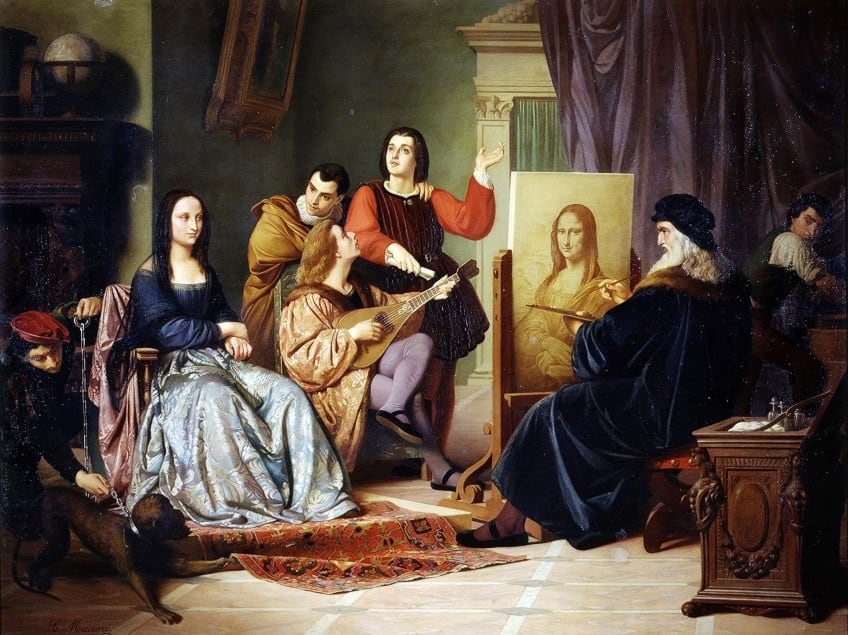
But what about his innovations, anatomic studies, topographical sketches, and technical, industrial, and architectural accomplishments? While many of his innovations, such as the helicopter, flying machine, and parachute, stayed in concept form and were impractical in practice, Da Vinci’s inquiring mind was recognized as being centuries ahead of its time.
The same can be said for the precision of his figure drawings, his early inquiry into topography, interest in blood circulation, and other mechanical engineering wonders.
This is not to forget his contributions to precise time-keeping, or the bobbin winder, which at the time had a significant effect on the local industry. His research towards improving military weapons also ushered in the tanks and guns that are so well-known to us today.
Leonardo da Vinci’s Accomplishments
Invention, art, science, architecture, music, engineering, mathematics, literature, geology, astronomy, anatomy, writing, botany, history, and cartography are just a few of the disciplines where Leonardo da Vinci excelled.
Learning never exhausts the intellect, according to a quote attributed to him.
Despite his extensive excursions into other fields of specialization, Da Vinci is most known as a painter. Some of his paintings, like Leonardo da Vinci’s portrait, the Mona Lisa , have continuously been considered ageless and universally famous.
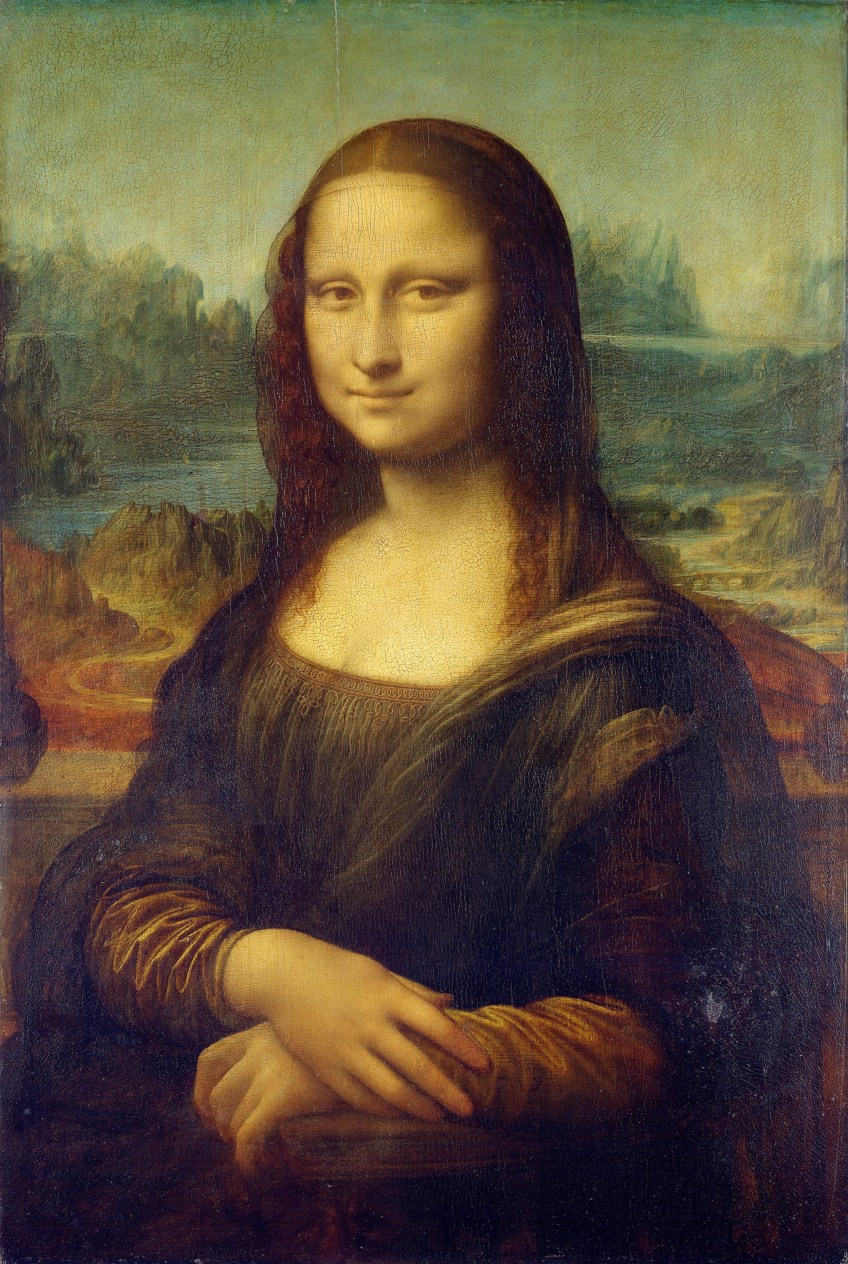
Early Renaissance principles such as chiaroscuro, linear perspective, naturalism, and emotional expressionism were influenced by his contributions to the aesthetics and methods of High Renaissance painting.
With his careful technique and the use of innovative methods, he outperformed many previous painters, such as with his sfumato method, his new approach to combining glazes that produced works that were so lifelike, it was as if his figures lived from within the pictorial plane.
Notable Leonardo da Vinci Artworks
Now that we have covered Leonardo da Vinci’s biography, let us take a look at a few of his most noteworthy artworks. This is just a list as we will also have an article featuring his works in more depth. We all know about Leonardo da Vinci’s portrait Mona Lisa , but let’s see what else he is known for:
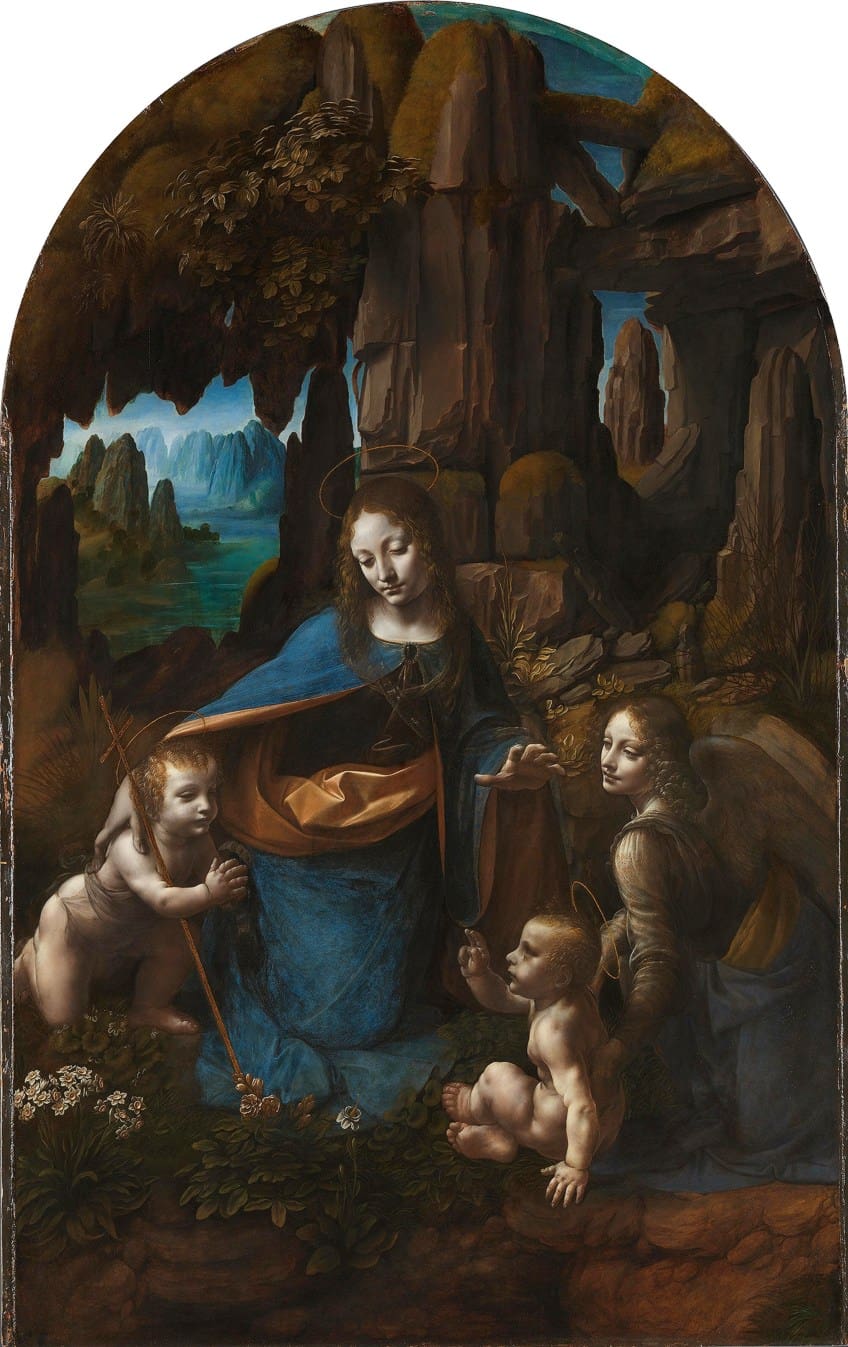
Recommended Reading
If you would like to learn more about Leonardo da Vinci’s accomplishments and art, then we can recommend checking out these books. They provide even more insight into Leonardo da Vinci’s biography and artworks.
Whether you are already a fan of his works, or just being introduced to this master, there is no better way to celebrate his works than with a book.

Leonardo da Vinci: Notebooks (2008) by Leonardo da Vinci
The majority of what is understood about Leonardo da Vinci comes from his famous notebooks, compiled around 1487 to 1490. Approximately 6,000 pages of notes and sketches have survived, representing approximately one-fifth of the actual work he created. He chronicled his studies on the flow of water and the development of rocks, the physics of aviation and optics, anatomy, building, painting, and sculpture in these volumes with an artist’s keen eye and a scientist’s curiosity.

- A compilation of the famous notebooks kept by Leonardo da Vinci
- Includes some 6,000 sheets of the artist's notes and drawings
- Fully updated edition with a preface by Da Vinci expert Martin Kemp
The Complete Notebooks of Leonardo da Vinci (2016) by Leonardo da Vinci
Many people see Leonardo da Vinci, possibly the leading figure of the Renaissance, as a man of mystery. Despite the fact that we have an unrivaled collection of records that illustrate his intellectual interests, processes, and innermost convictions. This compilation allows the reader insight into hundreds of his notes, drawings, doodles, musings, even book lists, and financial information.

- Includes all known Da Vinci papers as of the mid-19th century
- Illuminates the artist's thought processes, interests, and beliefs
- With hundreds of pages of notes, sketches, musings, and more
That concludes our exploration of the incredibly talented Renaissance man known to the world as Leonardo da Vinci. A man of many skills, Leonardo da Vinci’s accomplishments have made him one of the most well-known figures in human history. Yet, it is his art for which he is most well-known, specifically his paintings.
Take a look at our Leonardo da Vinci art webstory here!
Frequently Asked Questions
Where was leonardo da vinci born.
Leonardo da Vinci, one of human history’s most gifted and innovative prodigies, was born in 1452 in a small village near the town of Vinci. He grew up in a very large family and was the oldest of 12 siblings. He then moved to Florence when he was only 14 years of age. He passed away on the 2nd of May, 1519.
What Was Leonardo da Vinci Known For?
He had many talents and interests and was an exceptionally intelligent individual. Yet, it was painting for which he was most renowned. Besides that, he also showed an interest in architecture, biology, science, history, mathematics, maps, and countless other fields of study. His contribution to the principles and techniques of High Renaissance painting inspired early Renaissance ideas such as chiaroscuro , linear perspective, realism, and emotional expressionism. Many of his artworks have been regarded as timeless.

Isabella studied at the University of Cape Town in South Africa and graduated with a Bachelor of Arts majoring in English Literature & Language and Psychology. Throughout her undergraduate years, she took Art History as an additional subject and absolutely loved it. Building on from her art history knowledge that began in high school, art has always been a particular area of fascination for her. From learning about artworks previously unknown to her, or sharpening her existing understanding of specific works, the ability to continue learning within this interesting sphere excites her greatly.
Her focal points of interest in art history encompass profiling specific artists and art movements, as it is these areas where she is able to really dig deep into the rich narrative of the art world. Additionally, she particularly enjoys exploring the different artistic styles of the 20 th century, as well as the important impact that female artists have had on the development of art history.
Learn more about Isabella Meyer and the Art in Context Team .
Cite this Article
Isabella, Meyer, “Leonardo da Vinci – The Life and Artworks of Leonardo da Vinci.” Art in Context. October 27, 2022. URL: https://artincontext.org/leonardo-da-vinci/
Meyer, I. (2022, 27 October). Leonardo da Vinci – The Life and Artworks of Leonardo da Vinci. Art in Context. https://artincontext.org/leonardo-da-vinci/
Meyer, Isabella. “Leonardo da Vinci – The Life and Artworks of Leonardo da Vinci.” Art in Context , October 27, 2022. https://artincontext.org/leonardo-da-vinci/ .
Similar Posts

Johnny Depp Paintings – Is Johnny Depp an Artist?
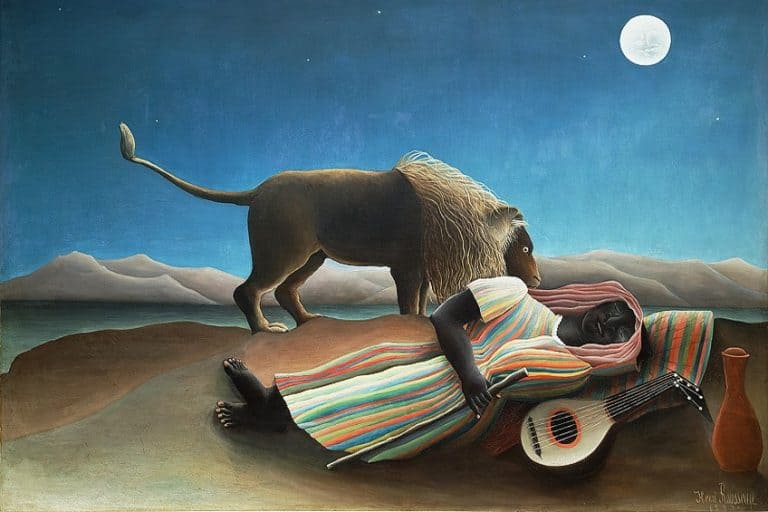
Henri Rousseau – A Look at the Life of the Tropical Paintings Artist

Mark Rothko – An Overview of Rothko’s Abstract Expressionism Period
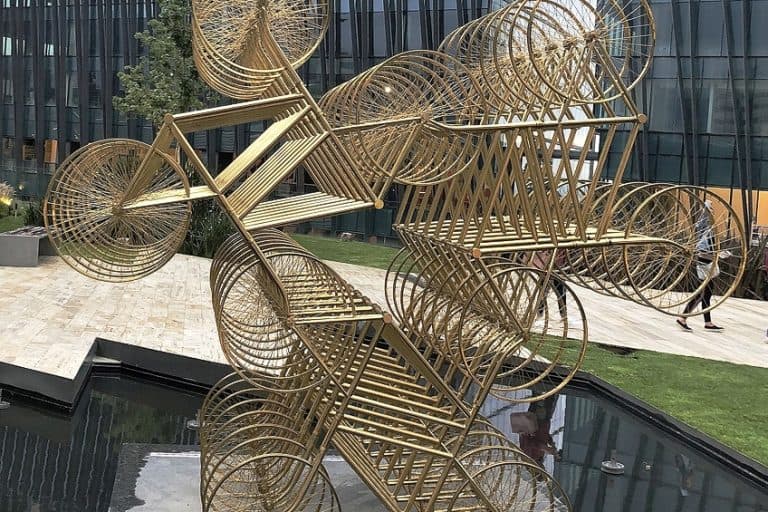
New York Artists to Know – 15 Big Apple Visionaries
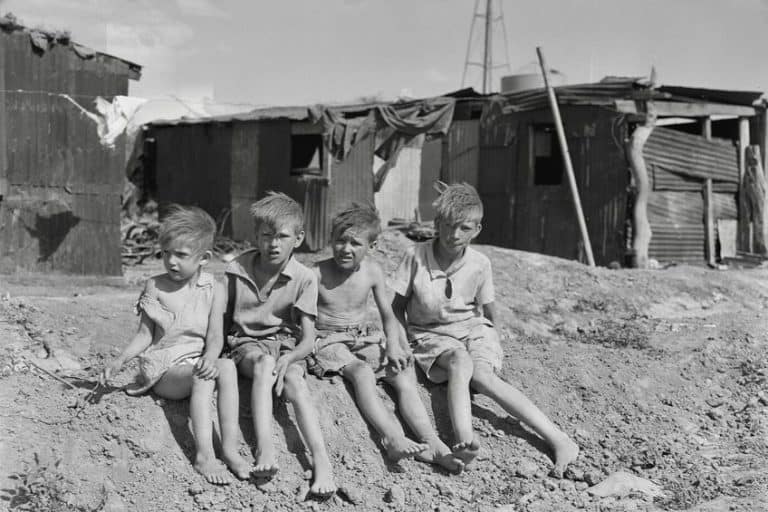
Dorothea Lange – Dorothea Lange Photography
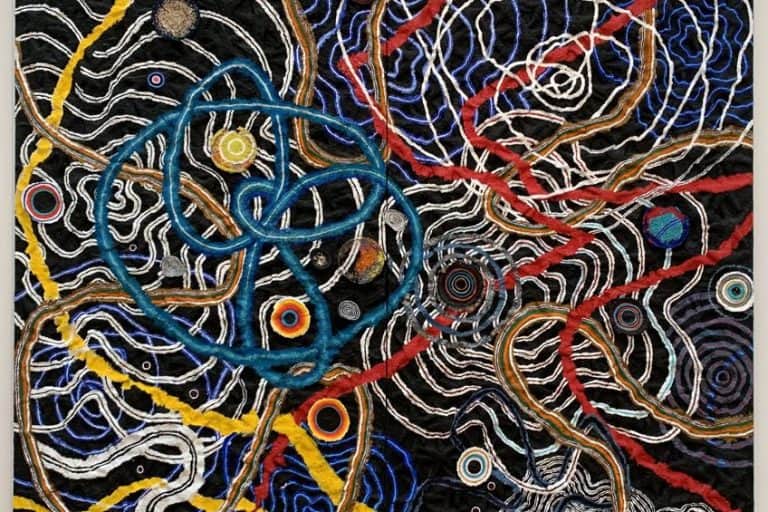
Lebanese Artists – Discover Lebanon’s Rich Artistic Heritage
Leave a reply cancel reply.
Your email address will not be published. Required fields are marked *
Save my name, email, and website in this browser for the next time I comment.
The Most Famous Artists and Artworks
Discover the most famous artists, paintings, sculptors…in all of history!

MOST FAMOUS ARTISTS AND ARTWORKS
Discover the most famous artists, paintings, sculptors!


Leonardo da Vinci
The unlikely genius of the renaissance.

Leonardo da Vinci – even his name evokes an aura of unparalleled genius. In this biography about Leonardo da Vinci we will delve deep into the life of a man whose name is synonymous with creativity. Even centuries after his death, this Renaissance figure remains an enigma, mastering multiple arts, sciences, and disciplines.
Born in a small town of Vinci, his legacy stretches far beyond the art galleries and museums that house his masterpieces. It delves into the very fabric of science, anatomy, engineering, and our understanding of the human soul. Leonardo's life serves as a testament to the fact that fervor, curiosity, and relentless dedication can lead to profound achievements. Join me as we follow the journey through the myriad facets of his life, reliving the Renaissance spirit as we go.
Early Life and Education (1452-1472)

Leonardo da Vinci, born Leonardo di ser Piero da Vinci, heralded from the picturesque town of Vinci, in the Tuscan region of Italy. His birth on April 15, 1452, was to a notary named Piero and a peasant woman named Caterina. Because of the difference in social status, a marriage to Ser Piero was unthinkable and Leonardo thus carried the stigma of being illegitimate. Catarina, who had little contact with Leonardo, married a man of her own status and Leonardo’s father likewise married a girl acceptable to his family.
During these formative years, Leonardo did not have the traditional upbringing that would be expected for a boy of his status in the 15th century. His illegitimate status excluded him from receiving a formal education in the Latin classics, like many of his contemporaries. While this could have been a setback for many, it was a blessing in disguise for young Leonardo. Free from the shackles of classical education, he pursued his own interests, which led him to observe the world around him with keen eyes. This unconventional path stoked his insatiable curiosity about nature, mechanics, and art.
Growing up in Vinci, a town surrounded by rolling hills, vineyards, and olive groves, Leonardo was captivated by nature. It’s here he developed an early fascination with the world around him. He would often venture into the countryside, sketchbook in hand, drawing landscapes, plants, and waterways. These observations of nature, both big and small, laid the foundation for his future masterpieces and his intricate studies of anatomy and flight.

In this segment of the biography about Leonardo da Vinci, we will see how Florence, the cradle of the Renaissance, played a pivotal role in shaping his early career.
At the age of 15, recognizing his budding talent and keen interest in art, Leonardo’s father took him to Florence. Here, he was apprenticed to Andrea del Verrocchio, one of the leading artists and intellectuals of the time. This period was crucial in Leonardo's development as an artist. Under Verrocchio’s tutelage, he not only honed his skills in painting and sculpture but also immersed himself in the diverse intellectual currents of the Florentine workshop. It exposed him to a range of subjects including metallurgy, mechanics, and carpentry, further fueling his polymathic interests.
Florence in the 15th century was a cauldron of creativity and innovation. As the Renaissance movement's epicenter, the city was bursting with new ideas in art, science, and philosophy. Being in this environment, Leonardo was exposed to the works of other brilliant minds, which profoundly influenced his own philosophies and methodologies.
One anecdote from his apprenticeship years under Verrocchio highlights both his skill and his relentless pursuit of perfection. While working on Verrocchio’s baptismal painting of "The Baptism of Christ," young Leonardo was tasked with painting a young angel holding Jesus' robe. His rendition was so lifelike and superior to his master's work that, as legend has it, Verrocchio vowed never to paint again, recognizing the unmatched talent of his young protégé. Whether this is actually true we don't know though I personally have my doubts.

Leonardo's time in Florence wasn't just about art and science. It was also about forming connections and understanding the intricate web of patronage that played a pivotal role in an artist's success. He became acquainted with prominent figures of Florentine society, which would later prove beneficial in securing commissions and support for his ambitious projects.
As the years in his apprenticeship came to a close, Leonardo was becoming a master in his own right. His reputation as a brilliant artist, combined with his insatiable curiosity, set him on a path that would see him transcend the boundaries of art, blending it seamlessly with science, and leaving an indelible mark on the world.
By the age of 20, Leonardo had qualified as a master in the Guild of Saint Luke, the guild of artists and doctors of medicine. This qualification not only cemented his status as an established artist but also set the stage for his subsequent explorations, experiments, and masterpieces.
In conclusion, Leonardo's early years were a blend of nature's inspiration, hands-on education, and exposure to the vibrant culture of Renaissance Florence. It was this unique melting pot of experiences that set the stage for the genius to bloom, promising a legacy that would forever change the way we perceive art and science.
Florence: Emergence of a Maestro (1472-1482)

Having solidified his reputation as a talented artist under Verrocchio's guidance, Leonardo’s journey in Florence from 1472 to 1482 is a testament to his growing prowess, ambition, and the formation of his distinctive style.
By the time Leonardo qualified as a master in the Guild of Saint Luke in 1472, Florence was flourishing as the epicenter of the Italian Renaissance. The city teemed with artists, thinkers, and merchants, becoming a nexus of intellectual discourse, artistic rivalry, and innovation. While the guild membership gave him the professional autonomy he needed, it was this stimulating environment of Florence that truly galvanized his creativity.
One of the first records of Leonardo's independent work was in 1473, with the drawing of the "Arno Valley." It stands as testament to his continuous fascination with nature and his evolving expertise in depicting landscapes. You can see the drawing below.

In this period, Leonardo started to garner commissions on his own, moving out of Verrocchio’s shadow. His work on "The Annunciation" showcases not just his supreme skill in capturing human forms but also his ability to integrate those forms into a harmonious, spatially coherent landscape setting. It is a symphony of divine narrative and nature, intertwined in perfect harmony.

While Leonardo's artistic ventures flourished, his notebooks from this period reveal that his insatiable curiosity extended far beyond paint and canvas. These journals are scattered with observations of river currents, sketches of Florentine buildings, detailed anatomical drawings, and myriad inventions. They bear witness to a mind that constantly observed, dissected, and sought to understand the very essence of the world around him.
If you would like to page through some of these note books you can go HERE .
In the vibrant streets of Florence, Leonardo would have crossed paths with other luminaries of the time, including Botticelli and Ghirlandaio. This period was rife with artistic competitions, pushing every artist to outdo one another. While there's no direct record of a rivalry, the competitive spirit of the times undoubtedly spurred Leonardo to reach greater heights.
A significant testament to Leonardo's growing reputation was the commission of the "Adoration of the Magi" in 1481 for the Augustinian monks of San Donato a Scopeto.
Leonardo’s approach was evident - building on but departing from tradition in places. The movement of the crowd admiring the Virgin and Child is clear and was a lesson he learned from his teacher. He breaks from tradition in placing the Virgin and Child in the centre of the piece. Traditionally the focus of the painting would have been placed on the side, approached by the kings from the opposite side.
He makes use of linear perspective (size diminishing with distance), which was widely used at the time, but also introduced perspective using diminishing detail (objects further away have less detail) and changes in intensity (objects further away are more muted). These were new concepts he had observed and recorded in his notebooks.
The unfinished work provides a glimpse into Leonardo's meticulous planning process. More than just an art piece, it was a study of movement, expression, and chaos, with intricate groupings and dramatic gestures. The work's dynamism and depth give us a hint of the monumental shifts Leonardo was bringing to the art world.

Outside of his artwork, the Florence years were also pivotal in shaping Leonardo's character and worldview. Immersed in a culture that valued knowledge and patronage, he understood the importance of aligning with influential figures. It’s during this time that he began seeking the patronage of the Medici family, the de facto rulers of Florence, who were known for their support of arts and sciences. While there isn’t direct evidence of a formal relationship, Leonardo's presence in their circles certainly expanded his horizons and connections.

The culmination of his Florentine years is best exemplified by the "Benois Madonna," an artwork that showcases Leonardo's evolving style. In it, we see the tender interaction between Mother and Child, the soft sfumato technique that became synonymous with Leonardo, and a landscape that stretches infinitely, capturing his love for nature and depth.
However, as the decade drew to a close, the winds of change beckoned. Leonardo's growing ambitions and perhaps the allure of new challenges and patrons led him to leave Florence for Milan in 1482. But his years in Florence had already set the stage. He departed not just as an accomplished artist but as a polymath, poised to transform every field he would touch.
In retrospect, the decade between 1472-1482 wasn’t just about Leonardo’s growth as an artist. It was about the emergence of a maestro who would redefine art, intertwining it with science, nature, and emotion in a manner never seen before. Florence was the crucible, and out of its fiery depths of creativity and competition, Leonardo emerged, phoenix-like, ready to soar to even greater heights.
Journey to Milan (1482-1499)

As this biography about Leonardo da Vinci unfolds, we see his journey to Milan marking a significant shift in his artistic and scientific pursuits.
By the time Leonardo reached Milan in 1482, he was more than just an artist; he was a multifaceted genius poised to enthrall a new city with his talents. The motivations behind this significant move are myriad. Whether it was the allure of the illustrious Sforza court, the desire for greater challenges, or simply the intrinsic need to expand his horizons, Milan became Leonardo's playground for nearly two decades.
Upon arriving, Leonardo wasted no time in introducing himself to Ludovico Sforza, Duke of Milan. It wasn’t just his painting skills that Leonardo highlighted to the Duke, but his prowess in engineering, architecture, and military strategy. The Milanese court, rich and receptive, was the perfect setting for Leonardo’s interdisciplinary talents.
One of the initial projects Leonardo undertook was an equestrian monument in honor of Ludovico’s father, Francesco Sforza. Although "The Horse" was never completed due to the complexities involved and political disruptions, Leonardo’s designs and plans for this ambitious project showcased his innovative thinking. His studies for this monument were exhaustive, delving deep into horse anatomy, dynamic poses, and metallurgical challenges.

Yet, while the grandiose equestrian statue remained unrealized, it was during this Milanese period that Leonardo would create some of his most iconic works. The "Last Supper," commissioned for the Convent of Santa Maria delle Grazie, is a testament to his understanding of human psychology, emotion, and his expertise in using perspective to dramatic effect. In this mural, Leonardo encapsulates a pivotal moment in Christian narrative, the instant Jesus announces a betrayer among his disciples. It remains one of the most studied and replicated artworks in history.

Milan became more than just a place of artistic commissions for Leonardo. It was where he deepened his scientific investigations. His notebooks from this period are filled with studies on hydraulics, flight, and anatomy. The Duke's patronage granted him access to human cadavers for dissection, allowing Leonardo to create some of the most detailed and accurate anatomical drawings of his time, bridging the gap between art and science.
A remarkable example of Leonardo's engineering ingenuity during his Milanese tenure is the design of the intricate lock system for the Martesana Canal. His innovative approach not only solved practical problems but also showcased the harmonious blend of functionality and aesthetic design.
The cultural ambiance of Milan under the Sforzas was electric. Leonardo, always seeking knowledge, would have rubbed shoulders with prominent intellectuals, musicians, and artists of the time. The court was also where he met the young mathematician Luca Pacioli. Together, they delved into the mysteries of proportion, leading to the development of the "Divine Proportion" or the "Golden Ratio," which would significantly influence Renaissance art and architecture.

Music was another realm Leonardo explored while in Milan. His designs for musical instruments, like the viola organista, showcase his desire to augment or redefine existing boundaries. It’s said that Leonardo’s musical talents were as exceptional as his artistic ones, with his performances enchanting the Milanese court.
Leonardo's time in Milan, however, wasn’t just a period of relentless creativity and exploration. It was also a time of personal growth and relationships. His notebooks from this era often mention his pupils and assistants, the most notable being Francesco Melzi, who would become a lifelong companion. Their close bond is evident in Leonardo’s works, where Melzi often played a significant role, either as a model or as a collaborator.
By the close of the 15th century, political winds in Milan shifted with the French invasion and the fall of the Sforza dynasty. Leonardo, ever the pragmatist, sensed the changing tides. His journey in Milan had spanned almost two decades, filled with incredible achievements and a few unrealized dreams. By 1499, it was time to move on.
In retrospection, Leonardo's Milanese chapter wasn't just about monumental artworks; it was about a holistic evolution. He emerged as an unparalleled polymath, seamlessly merging art with science, engineering, music, and architecture. Milan was not just a backdrop but an active catalyst, nurturing and being reshaped by the genius of Leonardo da Vinci.
Back to Florence (1500-1506)

As Leonardo returned to Florence in 1500, the city was undergoing profound changes. The Republic had been re-established after the fall of the Medici dynasty, and Florence was once again a buzzing hive of artistic and intellectual activity. This was the Florence of Michelangelo and Raphael, a competitive arena of artistic genius. Leonardo, however, wasn’t returning as the young apprentice of Verrocchio; he was now the renowned master who had captivated Milan.
Leonardo's re-entry into Florentine society was marked by personal reflections and an even deeper dive into scientific investigations. He seemed to be less interested in monumental public commissions and more consumed with private studies and smaller scale works. One might interpret this shift as Leonardo's conscious decision to focus on projects that truly piqued his interest, rather than those dictated by patronage or societal demands.
One of his most celebrated works from this period is the "Mona Lisa." Commissioned by Florentine merchant Francesco del Giocondo, this portrait of his wife, Lisa Gherardini, would become one of the most recognized and enigmatic paintings in art history. Leonardo's use of sfumato, the soft transition between colors and tones, gives the portrait its mysterious aura. The gentle smile of Mona Lisa, the atmospheric backdrop, and the play of light and shadow showcase Leonardo's matured artistry.

It wasn’t just the mastery over paint that occupied Leonardo in Florence. His relentless fascination with anatomy continued. His drawings became more systematic, culminating in plans for a comprehensive treatise on human anatomy. He performed dissections, not just out of artistic interest but driven by a scientific thirst to understand the human machine. One of his notable sketches from this period is the detailed study of the human heart, where he even hypothesized the function of the atrioventricular valve.

The competitive spirit of Florence during this time was palpable. Leonardo found himself amidst a fierce artistic rivalry, most notably with the young Michelangelo. Both were commissioned to paint vast battle scenes on opposite walls of the Hall of Five Hundred in the Palazzo Vecchio: Leonardo with "The Battle of Anghiari" and Michelangelo with "The Battle of Cascina." Unfortunately, neither project was completed, but they became legendary, showcasing the contrasting styles and techniques of the two titans. Leonardo’s experimental technique for "The Battle of Anghiari" led to technical issues, causing the paint to drip. Yet, the sketches and the few remaining fragments of these works display the dynamism and intensity Leonardo intended to portray.
Parallel to his artistic endeavors, Leonardo's notebooks from this period were filled with studies on botany, water flow, and flight. His designs for various flying machines, including the ornithopter and the aerial screw, were ahead of their time, demonstrating a profound understanding of aerodynamics and the principles of flight. Inspired by birds, he meticulously studied their flight mechanics, dreaming of the day humans might soar in the skies.

While in Florence, Leonardo also took on the role of an educator, training the next generation of artists. His workshop was lively, filled with students meticulously copying their master's works and techniques. Among them, artists like Francesco Melzi and Salai stood out, not just as students but as close companions and confidantes.
Yet, despite his accomplishments and the comforts of being back in his homeland, restless curiosity drove Leonardo. Florence, for all its artistic fervor, was becoming too familiar, too insular. By 1506, the winds of change beckoned again. Leonardo's insatiable quest for knowledge and novelty led him back to Milan, now under French rule, a move that would mark yet another significant chapter in his life's odyssey.
In revisiting his time in Florence, one observes a Leonardo who was introspective yet relentless, an artist who was becoming increasingly fascinated with the natural world and the underlying principles that governed it. The city, with its shifting political landscapes and burgeoning artistic rivalries, provided both challenges and inspirations. Leonardo’s second Florentine chapter, while brief, was undeniably influential, setting the stage for the multifaceted explorations in the years to come.
Milan and Beyond (1506-1513)
This part of the biography about Leonardo da Vinci brings us to his return to Milan in 1506, a city transformed from the one he left. Though Ludovico Sforza no longer held power and the French reigned supreme, Milan's admiration for Leonardo remained unwavering.
Charles d'Amboise, the French governor, swiftly became one of Leonardo's chief patrons. It was under d'Amboise that Leonardo was honored with the title of "painter and engineer of the Duke," reflecting his dual mastery in art and the sciences.

One striking piece from this era was "Portrait of an Unknown Woman" or "La Belle Ferronnière". Speculated to represent Ludovico Sforza’s mistress, this painting manifested Leonardo's evolving artistic genius, masterfully juxtaposing a detailed human portrait against a tranquil, faraway landscape.
However, the allure of science increasingly claimed Leonardo’s attention. His fascination with hydraulics prompted innovative models for water systems and ingenious solutions for canal locks.
One mustn't overlook his iconic Vitruvian Man during this period. An epitome of the Renaissance’s blend of art and science, this drawing captures Leonardo's insight into human proportions, as described by Vitruvius. Illustrating a man harmoniously fitting within both a circle and a square, it symbolizes the interconnectedness of earthly existence and the cosmic universe.

His anatomical quests continued, strengthened by his collaboration with Marcantonio della Torre, a renowned anatomist. While their grand plan of a detailed anatomy treatise remained unrealized, Leonardo's intricate drawings from numerous dissections set new paradigms, especially his groundbreaking studies on the human skull, eye, and fetus.
Leonardo, ever the collaborator, joined forces with polymath Francesco di Giorgio, leading to innovative architectural and engineering feats like canal constructions and fortified designs. This union of Renaissance giants gave rise to concepts far ahead of their time.
Leonardo's dreams of flight also found deeper grounding. His Codex on the Flight of Birds illuminated his rigorous observational approach, as he meticulously documented avian-inspired flight designs and preliminary aerodynamics principles.
His retreats to the Italian countryside further fed his insatiable curiosity. Through these travels, he sketched, pondered, and reflected, documenting everything from detailed botanical studies to musings on light and shadow's interplay in nature.
But, as the sun set on his Milanese chapter by 1513, Rome's ancient allure and the artistic promise it held under the patronage of Giuliano de’ Medici beckoned Leonardo.
In this Milan phase, we witness a Leonardo in full stride, straddling the realms of art and science with unparalleled grace. Whether crafting enchanting portraits or penning theories lightyears ahead, his Milanese tenure stands testament to his boundless curiosity and pioneering spirit.
Rome and Final Years (1513-1519)

Because of political upheavals, Leonardo left Milan and moved to Rome in 1513 with his two studio assistants Melzi and Salai.
In Rome he was very highly regarded, but he was relatively inactive and remarkably aloof from Rome’s rich social and artistic life.
In 1515 France's king Francis I, offered Leonardo the title of Premier Painter and Engineer and Architect to the King and a now elderly Leonardo was given a country house at Cloux and a stipend to live off.
His new patron did not demand much of him by way of commissions. (One notable exception was a commission to produce a mechanical lion that could walk and open its belly to display a bouquet of lilies). The King was satisfied with tapping Leonardo’s vast storehouse of knowledge, which left him free to concentrate on his scientific writings.

If you are industrious you can purchase a kit and build your own Leonardo Mechanical Lion replica .
Though painting wasn’t his prime focus in Rome, he didn't abandon it altogether. Rumors circulated of a few works he might have undertaken, but evidence is sparse. What is undeniable, however, is Leonardo's influence. The very aura of his presence in Rome, his methodologies, and his relentless inquiry into the nuances of nature and art left an indelible impact on the artists of the time.
By 1516, a new opportunity beckoned. Leonardo was invited to the court of Francis I of France, a young monarch who revered the Italian master. Leaving Rome behind, Leonardo traveled to France, settling in the Château of Cloux, near Amboise.
This French sojourn marked a gentle, introspective phase of Leonardo’s life. While he took on fewer projects, his advisory role at the court of Francis I was a testament to the king's respect for his genius. One of his known works from this period is the delicate "St. John the Baptist," which showcases his mastery over the play of light and shadow.

Leonardo’s final years in France were marked by reflection and consolidation. He revisited his notebooks, organized his vast array of sketches, and documented his myriad observations. In the tranquillity of the French countryside, surrounded by pupils and admirers, Leonardo continued his studies on flight, anatomy, and various natural phenomena.
Yet, even as his health declined, Leonardo's spirit remained unquenchable. He continued sketching, observing, and questioning until the very end. On May 2, 1519, at the age of 67, the Renaissance polymath breathed his last, leaving behind a legacy unparalleled in its breadth and depth.
In a life filled with ceaseless exploration, Leonardo da Vinci transcended the boundaries of his time, embodying the essence of the Renaissance. From the bustling studios of Florence to the courts of Milan and the ancient streets of Rome, and finally to the serene vistas of Amboise, Leonardo's journey was not just of places but of ideas, visions, and ceaseless curiosity

Leonardo's life, marked by ceaseless inquiry and innovation, underscores the boundless potential of human endeavor. His journey, from an illegitimate child in Vinci to the epitome of Renaissance brilliance, exemplifies the heights one can achieve through passion and perseverance. In Leonardo's story, we find a testament to the idea that regardless of one's origin or educational background, with enthusiasm and energy akin to Leonardo's, success is possible.
If you enjoyed this biography about Leonardo da Vinci, you will enjoy reading about the colourful life of Gauguin .

About Nolan Clark
Read more about Nolan Clark
Follow Us on :
Copyright © · Paint Basket TV · All Rights Reserved
As an Amazon Associate, I earn from qualifying purchases.
Pin It on Pinterest

Da Vinci — The Genius
Gain insight into the mind of a genius and the fundamental scientific and artistic principles he discovered., the renaissance man.

Who Was Leonardo Da Vinci?
While Leonardo da Vinci is best known as an artist, his work as a scientist and an inventor make him a true Renaissance man. He serves as a role model applying the scientific method to every aspect of life, including art and music. Although he is best known for his dramatic and expressive artwork, Leonardo also conducted dozens of carefully thought out experiments and created futuristic inventions that were groundbreaking for the time.
His keen eye and quick mind led him to make important scientific discoveries, yet he never published his ideas. He was a vegetarian who loved animals and despised war, yet he worked as a military engineer to invent advanced and deadly weapons. He was one of the greatest painters of the Italian Renaissance, yet he left only a handful of completed paintings.
Navigate this website to learn more about Leonardo's brilliant and imaginative mind, and the art, inventions, and discoveries that he made.
Learn More >
Da Vinci — The Artist
Leonardo sought a universal language in painting. Using perspective and his experiences with scientific observation, Leonardo tried to create faithful renditions of life. This call to objectivity became the standard for painters who followed in the 16th century.
Da Vinci — The Inventor
Throughout his life, Leonardo had brilliant and far-out ideas, ranging from the practical to the prophetic. Leonardo recognized that levers and gears, when applied properly, could accomplish astonishing tasks.
Da Vinci — The Scientist
Da Vinci bridged the gap between the shockingly unscientific medieval methods and our own trusty modern approach. The sheer range of topics that came under his inquiry is staggering: anatomy, zoology, botany, geology, optics, aerodynamics and hydrodynamics among others.
Leonardo da Vinci
This painter, inventor, and all-around supergenius rocked Renaissance Italy. Check out the timeline below to learn about the life of this legend.
Leonardo da Vinci is born in Vinci, Italy . (Get it? Da Vinci? From Vinci?) As a child, outdoorsy Leo loves hanging out in nature .
Teenaged Leonardo moves to Florence, Italy, where he takes painting lessons. Using a technique called tempera, the artist mixes color pigments with water and egg yolk to make paint.
The genius starts scribbling down some 20,000 pages of ideas. (Can you say writer’s cramp?) He spells words backward and reverses each letter so his notes only look normal when reflected in a mirror. “Mirror writing” might have helped protect his ideas from snoops.
Leonardo sketches designs of a flying machine . His blueprints make him the first known person to seriously study ways for humans to take flight.
Asked by the Duke of Milan to paint a mural for a dining room, Leonardo creates “The Last Supper.” People love the piece and Leonardo rockets to superstardom.
Leonardo starts work on the “Mona Lisa,” a painting famous for its eyes that seem to follow viewers wherever they move. Creepy !
Asked to be the King of France’s official painter, Leonardo goes to, um, France, where he stays for the rest of his life.
explore more!
Women heroes, african american heroes, native americans.
- Terms of Use
- Privacy Policy
- Your California Privacy Rights
- Children's Online Privacy Policy
- Interest-Based Ads
- About Nielsen Measurement
- Do Not Sell My Info
- National Geographic
- National Geographic Education
- Shop Nat Geo
- Customer Service
- Manage Your Subscription
Copyright © 1996-2015 National Geographic Society Copyright © 2015-2024 National Geographic Partners, LLC. All rights reserved
We will keep fighting for all libraries - stand with us!
Internet Archive Audio

- This Just In
- Grateful Dead
- Old Time Radio
- 78 RPMs and Cylinder Recordings
- Audio Books & Poetry
- Computers, Technology and Science
- Music, Arts & Culture
- News & Public Affairs
- Spirituality & Religion
- Radio News Archive

- Flickr Commons
- Occupy Wall Street Flickr
- NASA Images
- Solar System Collection
- Ames Research Center

- All Software
- Old School Emulation
- MS-DOS Games
- Historical Software
- Classic PC Games
- Software Library
- Kodi Archive and Support File
- Vintage Software
- CD-ROM Software
- CD-ROM Software Library
- Software Sites
- Tucows Software Library
- Shareware CD-ROMs
- Software Capsules Compilation
- CD-ROM Images
- ZX Spectrum
- DOOM Level CD

- Smithsonian Libraries
- FEDLINK (US)
- Lincoln Collection
- American Libraries
- Canadian Libraries
- Universal Library
- Project Gutenberg
- Children's Library
- Biodiversity Heritage Library
- Books by Language
- Additional Collections

- Prelinger Archives
- Democracy Now!
- Occupy Wall Street
- TV NSA Clip Library
- Animation & Cartoons
- Arts & Music
- Computers & Technology
- Cultural & Academic Films
- Ephemeral Films
- Sports Videos
- Videogame Videos
- Youth Media
Search the history of over 866 billion web pages on the Internet.
Mobile Apps
- Wayback Machine (iOS)
- Wayback Machine (Android)
Browser Extensions
Archive-it subscription.
- Explore the Collections
- Build Collections
Save Page Now
Capture a web page as it appears now for use as a trusted citation in the future.
Please enter a valid web address
- Donate Donate icon An illustration of a heart shape
Leonardo da Vinci
Bookreader item preview, share or embed this item, flag this item for.
- Graphic Violence
- Explicit Sexual Content
- Hate Speech
- Misinformation/Disinformation
- Marketing/Phishing/Advertising
- Misleading/Inaccurate/Missing Metadata
![[WorldCat (this item)] [WorldCat (this item)]](https://archive.org/images/worldcat-small.png)
plus-circle Add Review comment Reviews
16 Favorites
Better World Books
DOWNLOAD OPTIONS
No suitable files to display here.
IN COLLECTIONS
Uploaded by station10.cebu on August 17, 2020
SIMILAR ITEMS (based on metadata)
Based on a True Story
A New Leonardo da Vinci Biopic Is Coming to the Big Screen
The film will be an adaptation of Walter Isaacson’s biography of the Renaissance painter, scientist and inventor
/https://tf-cmsv2-smithsonianmag-media.s3.amazonaws.com/accounts/headshot/SarahKuta.png)
Daily Correspondent
:focal(1800x1200:1801x1201)/https://tf-cmsv2-smithsonianmag-media.s3.amazonaws.com/filer_public/5f/7b/5f7bb454-c4ac-4868-941f-5d220f48063e/gettyimages-811820104.jpg)
Leonardo da Vinci is getting the Hollywood treatment: The Italian Renaissance artist, who lived during the late 15th and early 16th centuries, will be the subject of a forthcoming biopic from Universal Pictures. The studio recently confirmed that Andrew Haigh, best known for All of Us Strangers (2023), will direct the production, as Variety ’s Tatiana Siegel reports.
The film will be based on Walter Isaacson’s 2017 biography of Leonardo, a sprawling tome based largely on the polymath’s notebooks.
“It remains unclear whether it will touch on just one aspect of the artist’s life or the whole thing,” writes ARTnews ’ Alex Greenberger. “Isaacson’s book”—which is more than 600 pages long—“traces the full arc of Leonardo’s career, including his making of the Mona Lisa and his scientific experiments.”
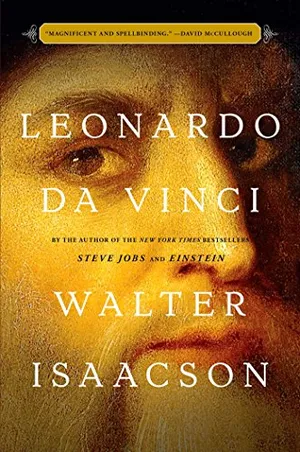
Leonardo da Vinci
Based on thousands of pages from Leonardo da Vinci’s astonishing notebooks and new discoveries about his life and work, Walter Isaacson “deftly reveals an intimate Leonardo” (San Francisco Chronicle) in a narrative that connects his art to his science. He shows how Leonardo’s genius was based on skills we can improve in ourselves, such as passionate curiosity, careful observation, and an imagination so playful that it flirted with fantasy.
Soon after Isaacson’s biography debuted, Paramount bought the rights to the book—and even started working with actor Leonardo DiCaprio to turn it into a film. However, that project never came to fruition, and Universal bought the rights last year. The company then selected Oscar-winning screenwriter Christopher Hampton to write the screenplay.
This film will be Universal’s second big-screen adaptation of an Isaacson book: In 2015, the studio released Steve Jobs , which is based on the author’s 2011 biography .
Universal’s production also isn’t the only film focused on Leonardo currently in the works: In November, PBS will air Ken Burns’ two-part documentary series, which “examines the Italian polymath’s unrelenting drive to understand the world and the enduring influence of his legacy,” as Smithsonian magazine ’s Julia Binswanger writes. (Leonardo was the first non-American subject material for Burns, who co-directed the film with daughter Sarah Burns and son-in-law David McMahon .)
Born in 1452 to unwed parents, Leonardo spent his childhood on his father’s family’s estate. At around age 14 or 15, he began apprenticing under Florentine artist Andrea del Verrocchio , who taught him how to paint and sculpt. The teenager also studied under Antonio Pollaiuolo , who ran a nearby workshop.
Later, Leonardo began working independently in Florence, where he made pencil and pen sketches of objects such as military weapons and pumps.
In 1482, Leonardo moved to Milan, where he lived and worked for 17 years. The city’s duke, Ludovico Sforza , employed him as a painter, sculptor and designer of court festivals. He also often weighed in on technical matters as an engineer.
Leonardo created one of his best-known works, The Last Supper , during his time in Milan. Painted in the 1490s, the work depicts Jesus and his disciples breaking bread the night before the crucifixion. That masterpiece is located in the refectory of the Santa Maria delle Grazie monastery in Milan, which has been a UNESCO World Heritage site since 1980.
Between 1500 and 1508, Leonardo returned to Florence—where he painted the Mona Lisa —before moving back to Milan for several years. During his second stint in the city, he became engrossed in scientific study, with a particular interest in anatomy, physiology, math, geology and botany. The polymath spent his final years in France, living near Amboise on the Loire River and working under Francis I as a painter, architect and engineer.
Leonardo’s sexuality has long been a matter of debate among historians and other onlookers (including Sigmund Freud ). Isaacson’s biography leans into the idea that Leonardo was gay, and it remains to be seen whether or how the forthcoming film will tackle this subject . However, as Queerty ’s Cameron Scheetz writes, Haigh is “one of our most prolific LGBTQ writer-directors working today,” adding that many of his previous projects have examined queer themes.
Get the latest stories in your inbox every weekday.
A Note to our Readers Smithsonian magazine participates in affiliate link advertising programs. If you purchase an item through these links, we receive a commission.
/https://tf-cmsv2-smithsonianmag-media.s3.amazonaws.com/accounts/headshot/SarahKuta.png)
Sarah Kuta | READ MORE
Sarah Kuta is a writer and editor based in Longmont, Colorado. She covers history, science, travel, food and beverage, sustainability, economics and other topics.
Unveiling the Genius: A Leonardo da Vinci Audio BiographyEmbark on a captivating audio journey through the life and mind of Leonardo da Vinci, the ultimate Renaissance man. In this captivating podcast, we delve beyond the iconic paintings and delve into the heart of a genius. Discover his insatiable curiosity, his scientific pursuits, his artistic breakthroughs, and the inventions that were centuries ahead of their time.Through vivid narratives, expert insights, and captivating storytelling, we bring da Vinci's world to life. Unravel the mysteries of the Mona Lisa's enigmatic smile, explore the anatomical secrets hidden within his drawings, and witness the ingenuity behind inventions like the flying machine and the tank.Join us as we paint a portrait of this extraordinary individual, not just as an artist, but as a scientist, inventor, and dreamer who forever altered the course of human history. Prepare to be inspired, amazed, and left wanting more. Subscribe now to "Unveiling the Genius: A Leonardo da Vinci Audio Biography."
Leonardo da Vinci master Audio Biography Biography
- Society & Culture
Leonardo da Vinci Audio Biography
- © Copyright 2023 Quiet. Please
Top Podcasts In Society & Culture

IMAGES
VIDEO
COMMENTS
Leonardo da Vinci was an artist and engineer who is best known for his paintings, notably the Mona Lisa (c. 1503-19) and the Last Supper (1495-98). His drawing of the Vitruvian Man (c. 1490) has also become a cultural icon. Leonardo is sometimes credited as the inventor of the tank, helicopter, parachute, and flying machine, among other vehicles and devices, but later scholarship has ...
Leonardo da Vinci was a Renaissance artist and engineer, known for paintings like "The Last Supper" and "Mona Lisa," and for inventions like a flying machine.
Leonardo da Vinci (1452 - 1519) is one of the world's greatest thinkers, artists and philosophers. Seeking after perfection, he created rare masterpieces of art such as 'The Mona Lisa' and The Last Supper.' In addition to art, Da Vinci studied all aspects of life from anatomy to mathematics and astronomy; his far-reaching investigations and discoveries […]
Biography Early life (1452-1472) Birth and background Leonardo Da Vinci's baptism record. Leonardo da Vinci, properly named Leonardo di ser Piero da Vinci ("Leonardo, son of ser Piero from Vinci"), was born on 15 April 1452 in, or close to, the Tuscan hill town of Vinci, 20 miles from Florence. He was born out of wedlock to Piero da Vinci (Ser Piero da Vinci d'Antonio di ser Piero di ser ...
Definition. Leonardo da Vinci (1452-1519) was an Italian Renaissance artist, architect, engineer, and scientist. He is renowned for his ability to observe and capture nature, scientific phenomena, and human emotions in all media. Leonardo's innovative masterpieces demonstrate a mastery of light, perspective, and overall effect.
Leonardo da Vinci was a painter, engineer, architect, inventor, and student of all things scientific. His natural genius crossed so many disciplines that he epitomized the term " Renaissance man ...
Leonardo di ser Piero da Vinci, widely considered one of the most gifted and inventive men in history, was born in 1452 in a village near the town of Vinci, Tuscany. The illegitimate son of Piero Fruosino di Antonio da Vinci, a Florentine notary and landlord, and Caterina, a peasant girl (who later married an artisan), Leonardo was brought up ...
Leonardo da Vinci (1452-1519) is one of the most intriguing personalities in the history of Western art. Trained in Florence as a painter and sculptor in the workshop of Andrea del Verrocchio (1435-1488), Leonardo is also celebrated for his scientific contributions. His curiosity and insatiable hunger for knowledge never left him.
Leonardo da Vinci was born on 15 April 1452 near the Tuscan town of Vinci, the illegitimate son of a local lawyer. He was apprenticed to the sculptor and painter Andrea del Verrocchio in Florence ...
Leonardo da Vinci, Head of Leda, c. 1504-06, pen and ink over black chalk, 14.7 x 17.7 cm (Royal Collection trust, UK) Because of his family's ties, Leonardo benefited when Lorenzo de' Medici (the Magnificent) ruled Florence. By 1478 Leonardo was completely independent of Verrocchio and may have then met the exiled Ludovico Sforza, the ...
In April 1519 Leonardo, now 67, drew up his will. He left most of his works to his adored pupil and companion, Francesco Melzi. He died later that year and was buried in Amboise. Painter, sculptor, architect, designer, theorist, engineer and scientist, Leonardo da Vinci created some of the most famous images in European art.
Leonardo di ser Piero da Vinci was an Italian polymath of the High Renaissance who was active as a painter, draughtsman, engineer, scientist, theorist, sculptor, and architect. While his fame initially rested on his achievements as a painter, he has also become known for his notebooks, in which he made drawings and notes on a variety of subjects, including anatomy, astronomy, botany ...
The Artist. Biography. The illegitimate son of a 25-year-old notary, Ser Piero, and a peasant girl, Caterina, Leonardo was born on April 15, 1452, in Vinci, Italy, just outside Florence. His father took custody of him shortly after his birth. Growing up in his father's Vinci home, Leonardo had access to scholarly texts owned by family and friends.
Leonardo da Vinci (April 15, 1452-May 2, 1519) was an artist, humanist, scientist, philosopher, inventor, and naturalist during the Italian Renaissance. His genius, says his biographer Walter Isaacson, was his ability to marry observation with imagination and to apply that imagination to intellect and its universal nature.
Leonardo da Vinci, one of human history's most gifted and innovative prodigies, was born in 1452 in a small village near the town of Vinci. He grew up in a very large family and was the oldest of 12 siblings. He then moved to Florence when he was only 14 years of age. He passed away on the 2nd of May, 1519.
The Unlikely Genius of the Renaissance. Leonardo da Vinci - even his name evokes an aura of unparalleled genius. In this biography about Leonardo da Vinci we will delve deep into the life of a man whose name is synonymous with creativity. Even centuries after his death, this Renaissance figure remains an enigma, mastering multiple arts ...
While Leonardo da Vinci is best known as an artist, his work as a scientist and an inventor make him a true Renaissance man. He serves as a role model applying the scientific method to every aspect of life, including art and music. Although he is best known for his dramatic and expressive artwork, Leonardo also conducted dozens of carefully ...
1516. Asked to be the King of France's official painter, Leonardo goes to, um, France, where he stays for the rest of his life. This painter, inventor, and all-around supergenius rocked Renaissance Italy. Check out the timeline below to learn about the life of this legend.
Born on April 15, 1452 at Vinci near Florence, Leonardo was trained, according to Vasari, in "all matters pertaining to design" by Andrea del Verrocchio, the leading sculptor of the time. Confirmation of Vasari's claim comes from a note in Leonardo's manuscript G, referring to his master's method of fabricating the copper ball set atop the ...
Leonardo, da Vinci, 1452-1519, Leonardo, Leonardo da Vinci 1452-1519, Artists -- Italy -- Biography, Scientists -- Italy -- Biography, ... brings Leonardo da Vinci to life in this exciting new biography. Drawing on thousands of pages from Leonardo's astonishing notebooks and new discoveries about his life and work, Walter Isaacson weaves a ...
Museum of Science, Boston. Leonardo da Vinci: Scientist, Inventor, Artist. National Gallery of Australia, Canberra. Study for the head of Christ for The Last Supper, ca.1495. National Museum of Science and Technology, Milan. Exhibit showing many of Leonardo's inventions and manuscripts.
The film will be an adaptation of Walter Isaacson's biography of the Renaissance painter, scientist and inventor Sarah Kuta Daily Correspondent Leonardo da Vinci is getting the Hollywood ...
Unveiling the Genius: A Leonardo da Vinci Audio BiographyEmbark on a captivating audio journey through the life and mind of Leonardo da Vinci, the ultimate Renaissance man. In this captivating podcast, we delve beyond the iconic paintings and delve into the heart of a genius. Discover his insatiable…